Maalula معلولا
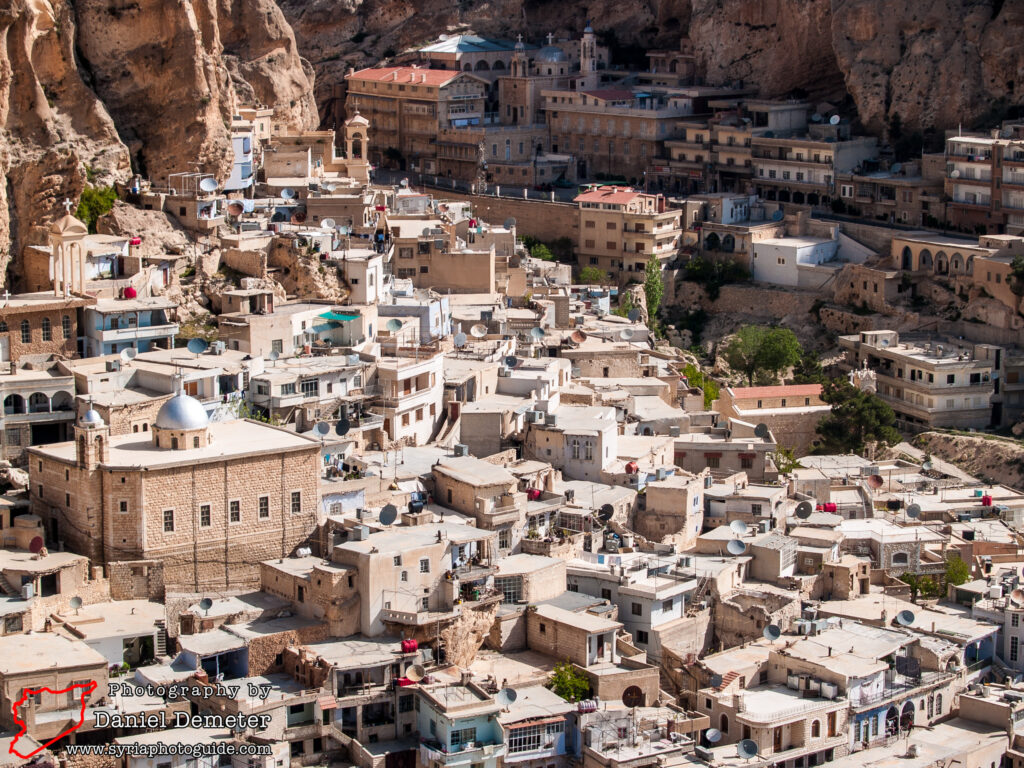
The small scenic town of Maalula (معلولا) is one of the most picturesque in Syria, nestled on the slopes of a rocky mountain canyon. Best known for its Aramaic-speaking Christian community (one of few remaining in the Middle East), the town has become a center for the preservation and revitalization of the language. The Western dialect of Aramaic spoken here is considered to be the closest surviving dialect to the language spoken in first century Palestine, and is therefore commonly associated with the language of Jesus. The language evolved during its nearly two millennia of geographic isolation, but remains important for studies in linguistic anthropology. Two smaller villages nearby, Jubaadin (جبعدين) and Bakhaa (بخعة), also have some Aramaic-speaking residents.
Maalula (معلولا) has been inhabited at least as far back at the Roman period, as evidenced by the remains of a pagan temple reused in one of its churches. Artifacts from the Byzantine period have also been unearthed. The population was as high as 15,000 in the 1950s, but today only a couple thousand maintain permanent residency here. Many local families have moved to Damascus (دمشق) for greater career opportunities, returning to the town on holidays. Maalula (معلولا) has a small Sunni Muslim population, mostly residing on its southeastern outskirts. The Christian community is mostly divided between the Antiochian Greek Orthodox and Melkite Greek Catholic churches.
There are several sites of interest to visitors in Maalula (معلولا). In the far north of town is Deir Mar Taqla (دير مار تقلا), a Greek Orthodox women’s monastery dedicated to Saint Taqla (Thecla). She is believed to have been a disciple of Saint Paul the Apostle, promoting his teachings to women (particularly the importance of chastity) and becoming a symbol of female empowerment at the time. She is considered one of the early martyrs of Christianity. The cave chapel above the more modern church and monastery complex is, according to local tradition, her burial place. There is no archaeological evidence to confirm this association, but that does not prevent a steady flow of religious pilgrims from visiting the site.
North of this monastery is a small ravine that ascends to the hills overlooking the town. Within the ravine are several humble rock-cut tombs dating from the earliest periods of the settlement. After ascending to the paved road at the top of the ravine, head west to nearby Deir Mar Sarkis (دير مار سركيس). This Greek Catholic monastery is the most archaeologically important site in the town. The church, on the southern end of the monastery, has foundations dating back to a pagan temple from the Roman period. Many other architectural elements date back to the fifth and sixth century. Saint Sarkis (Sergius), and his companion Bacchus, were particularly revered in the Syrian desert regions during the Byzantine period.
There are several other churches to be found within the town, and exploring the maze of small alleyways of its older residential districts is worthwhile. Those interested in a more challenging climb of the hill southwest of Maalula (معلولا) will be rewarded with magnificent views of town. There are some modest cafes and shops in the town center and near the entrance to Deir Mar Taqla (دير مار تقلا).
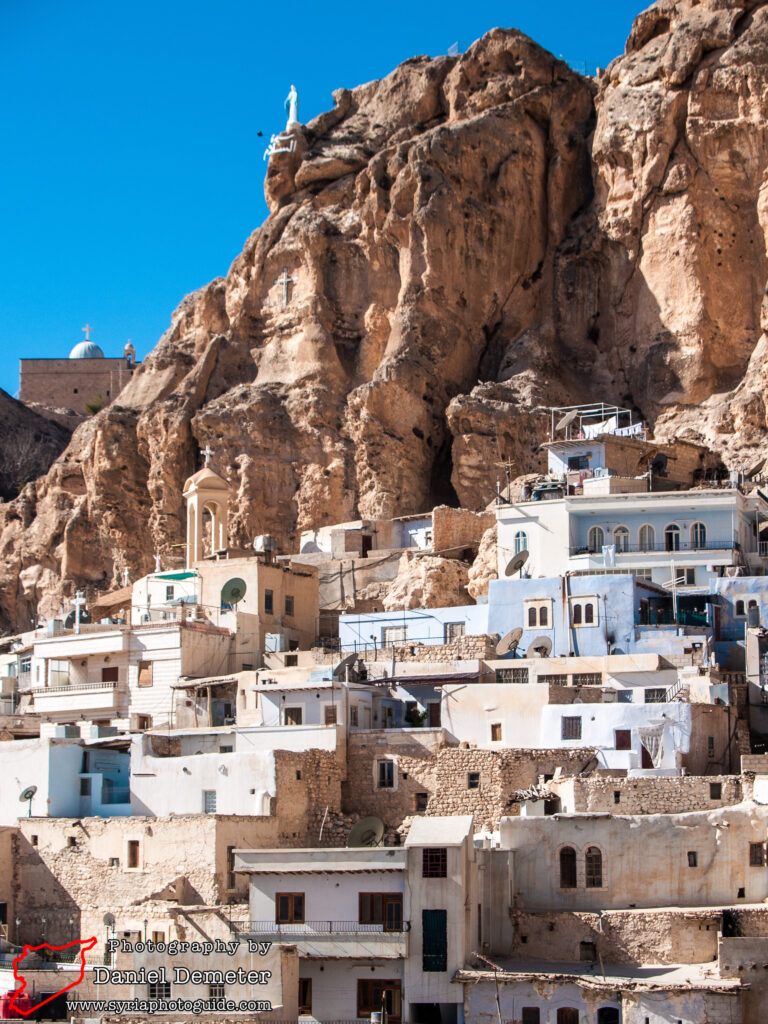
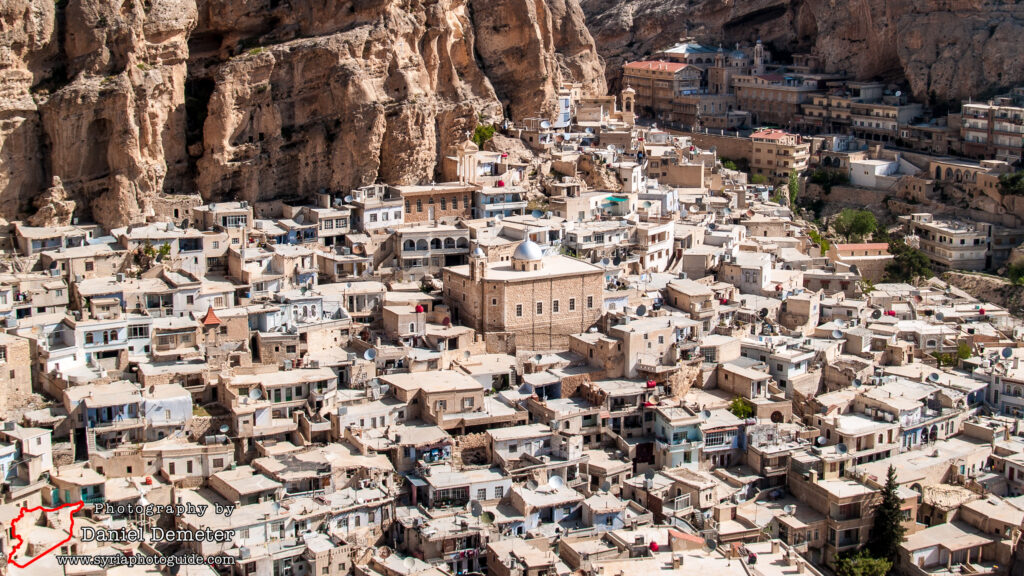
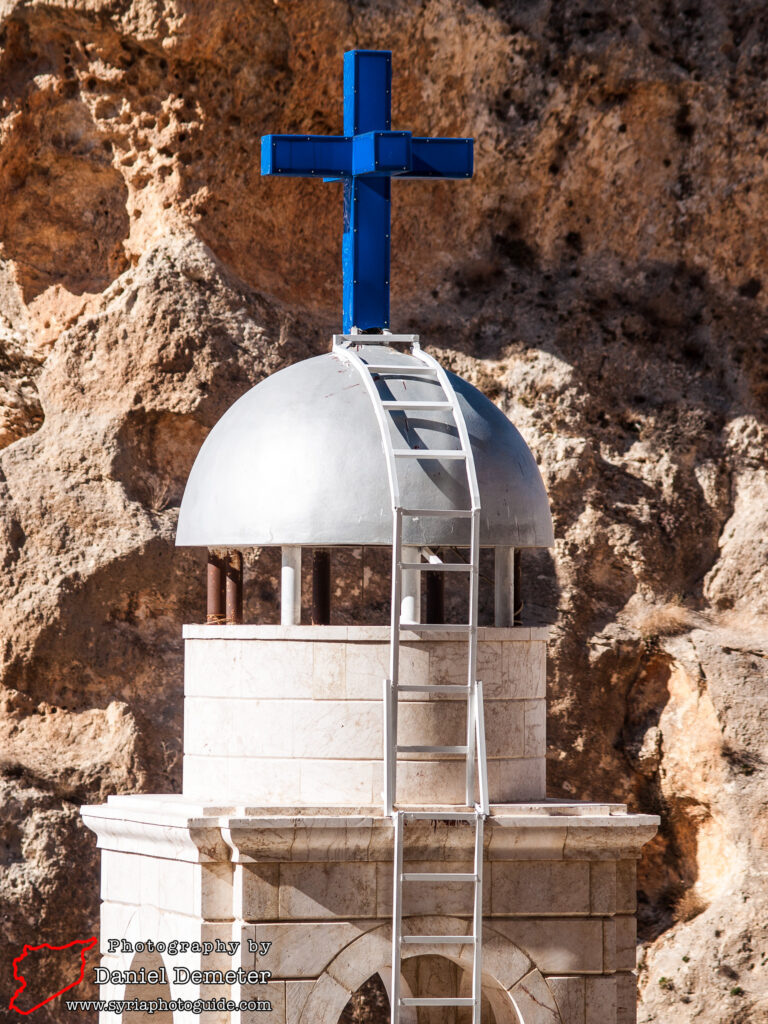
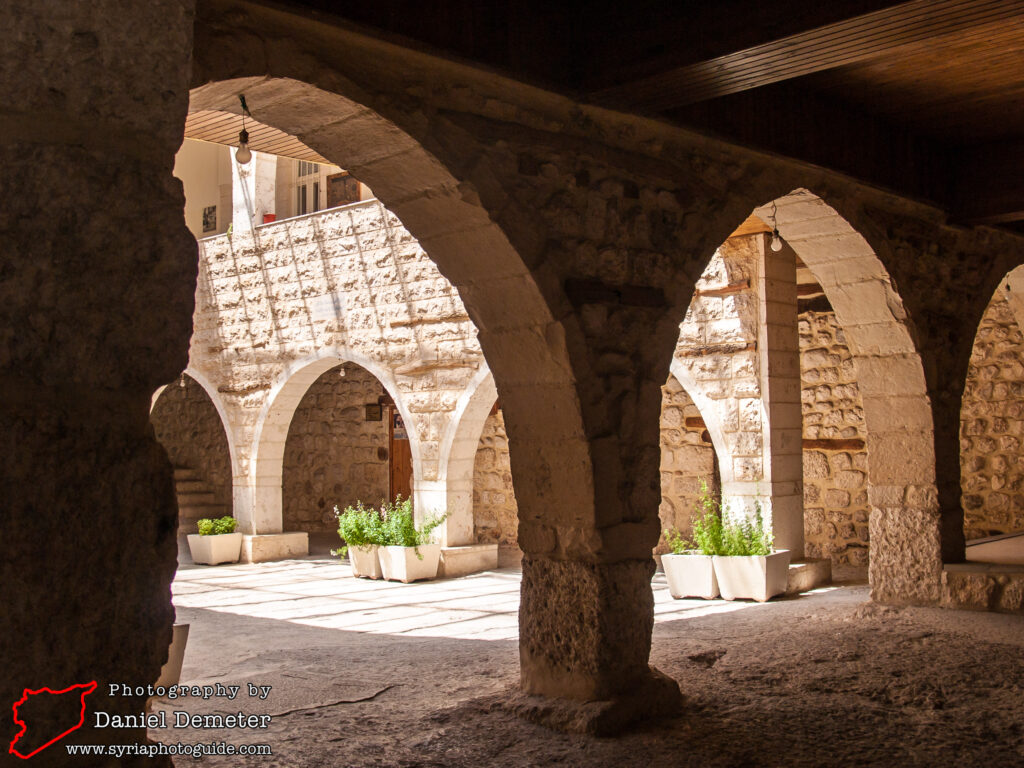
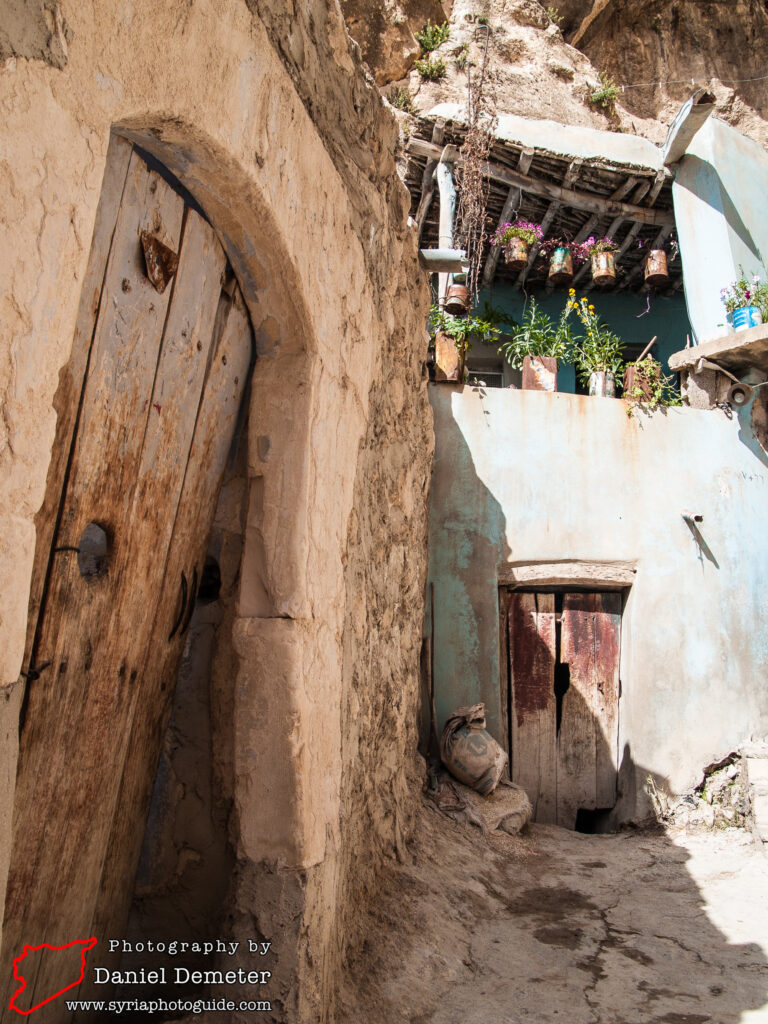
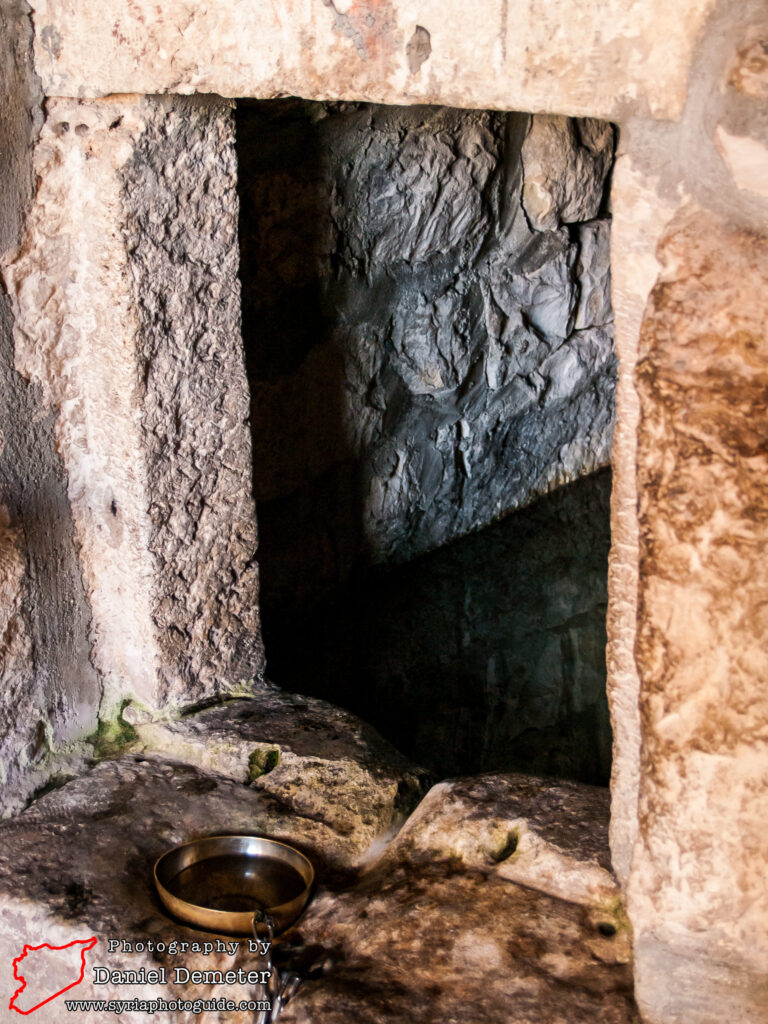
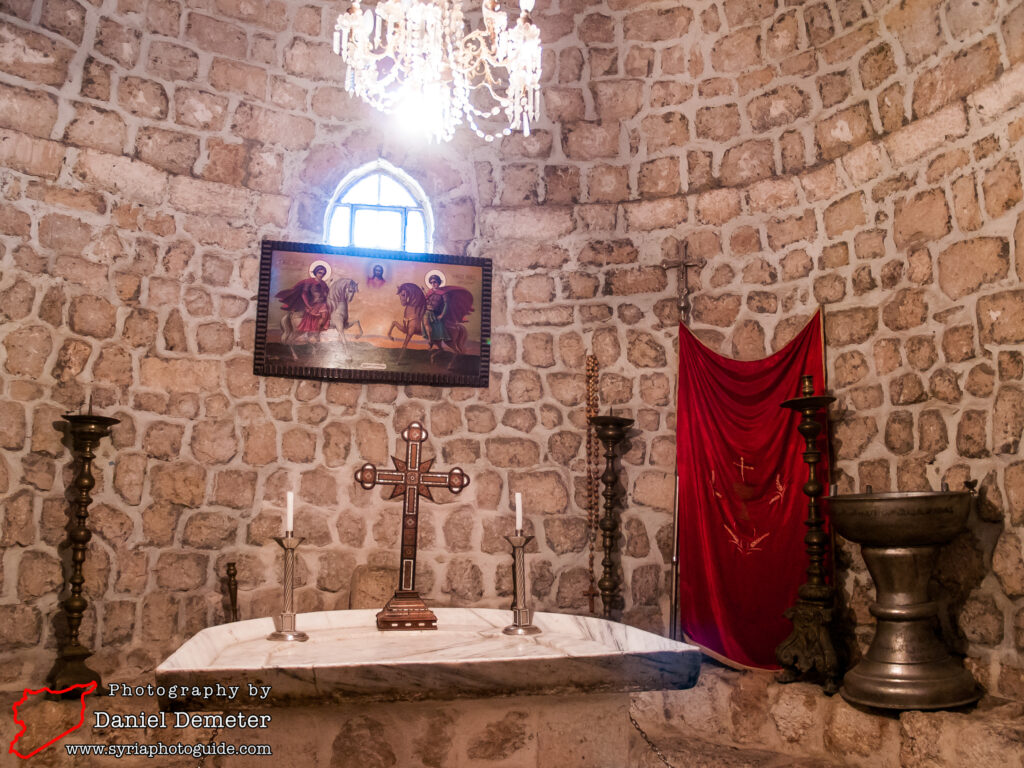
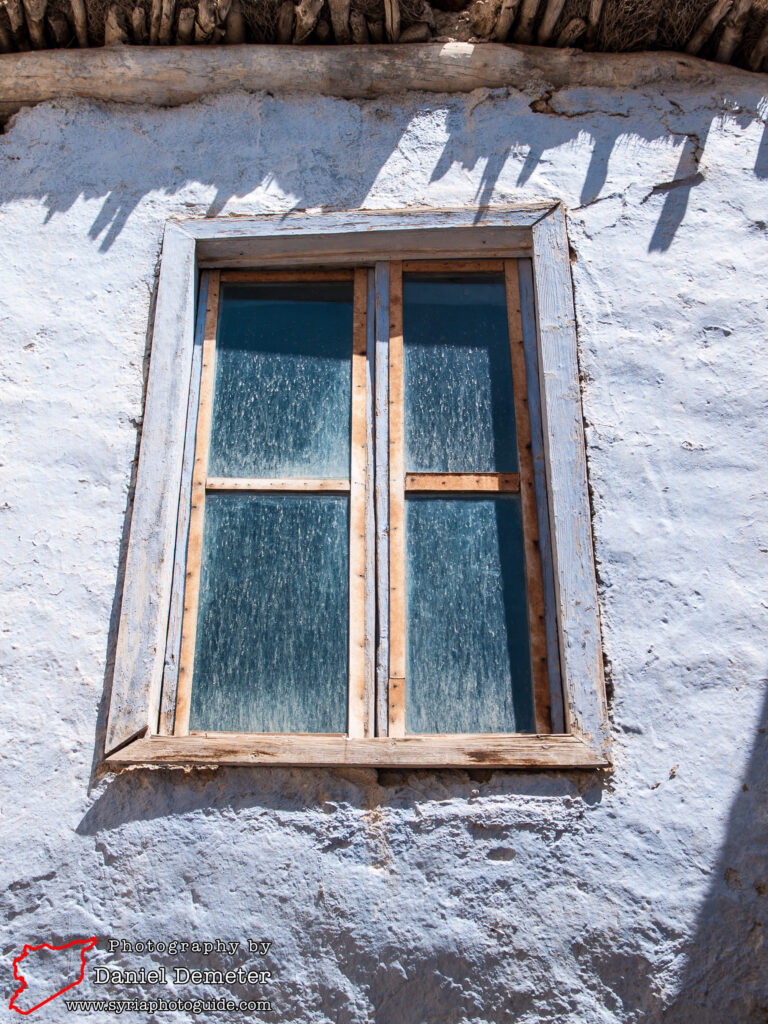
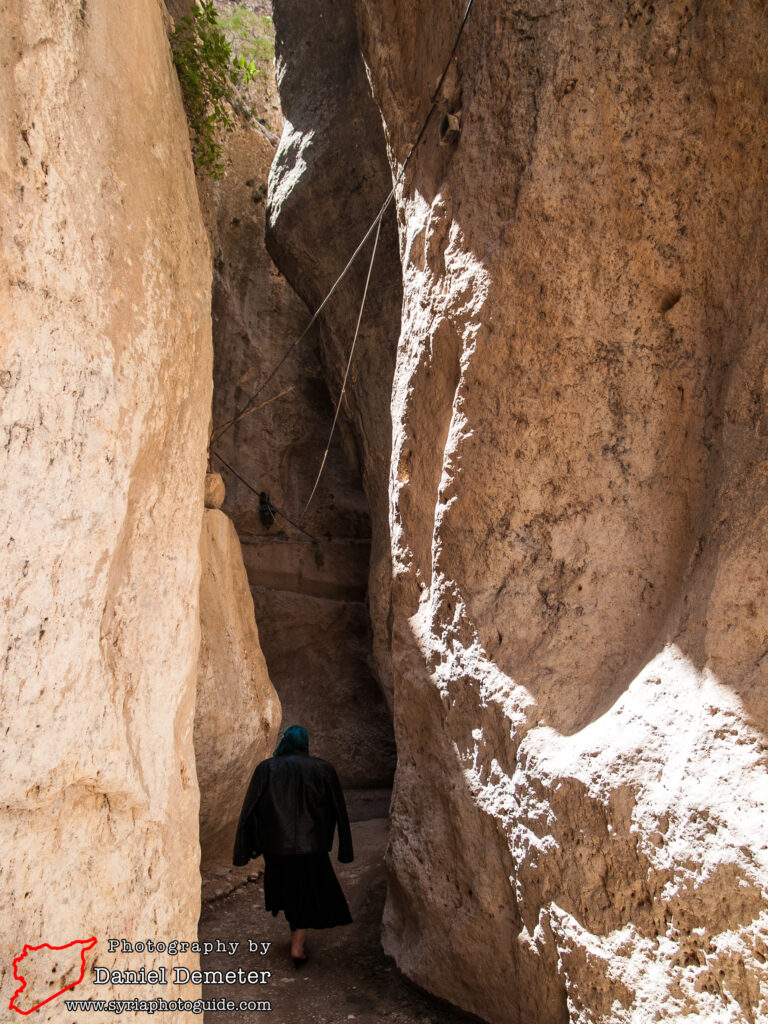
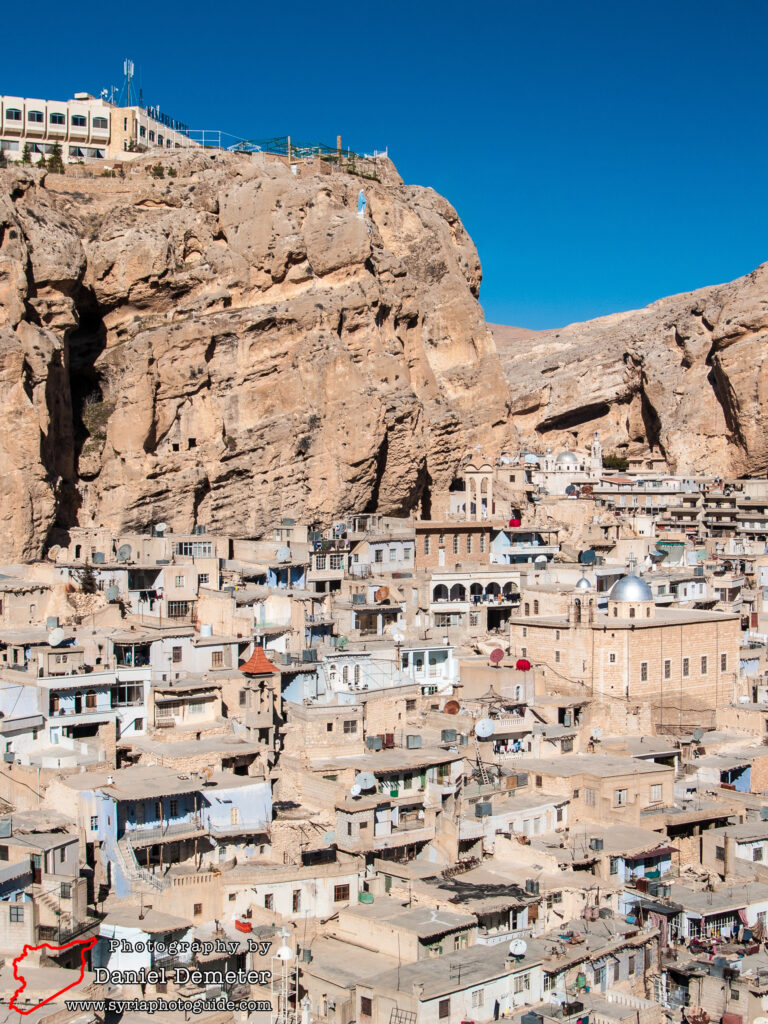
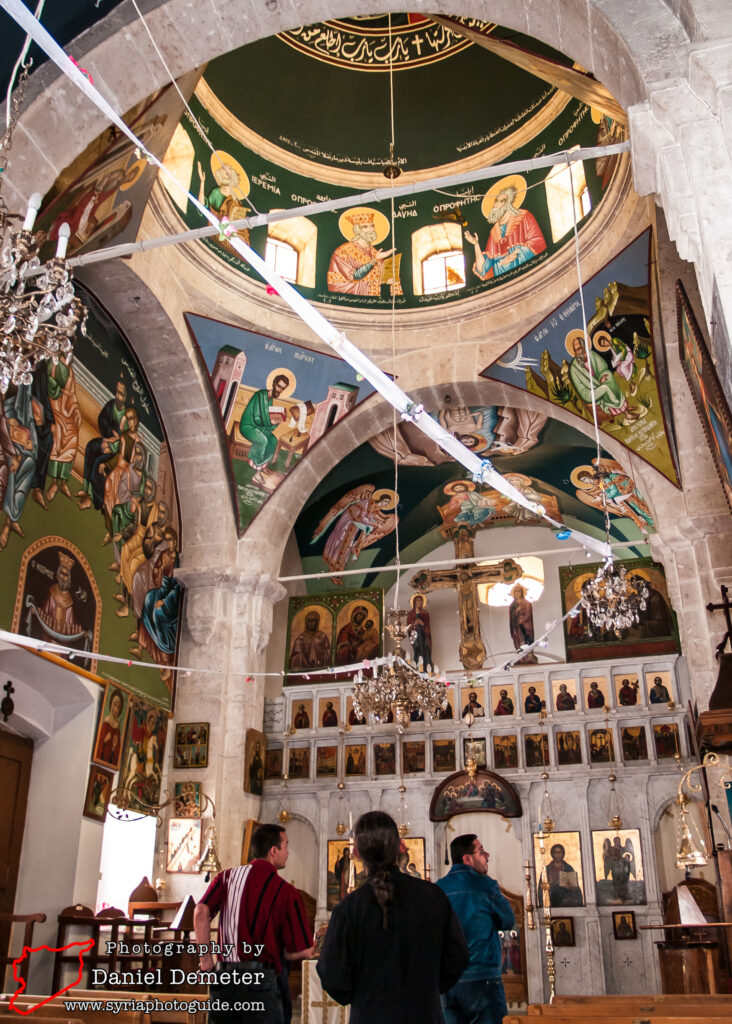
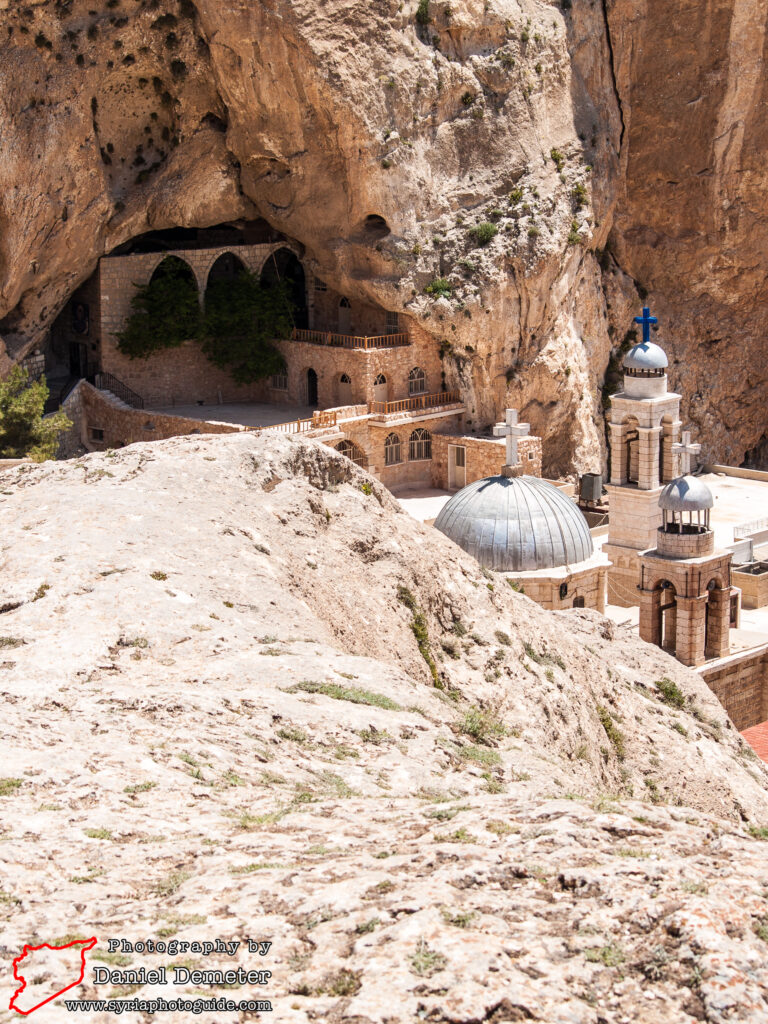
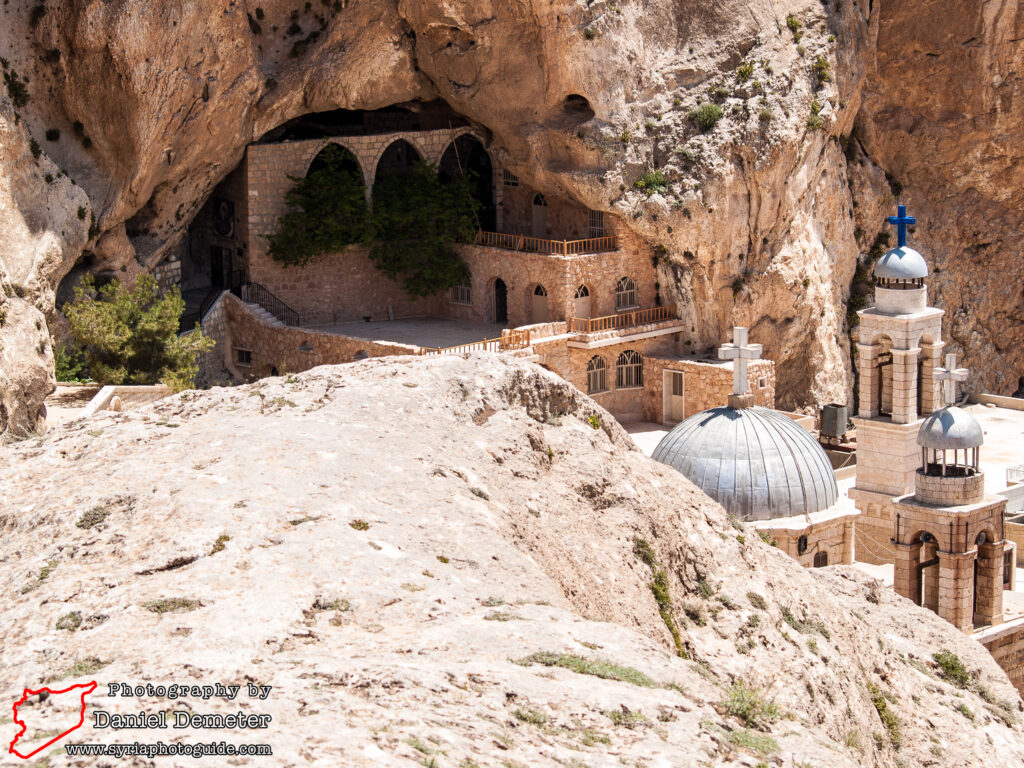
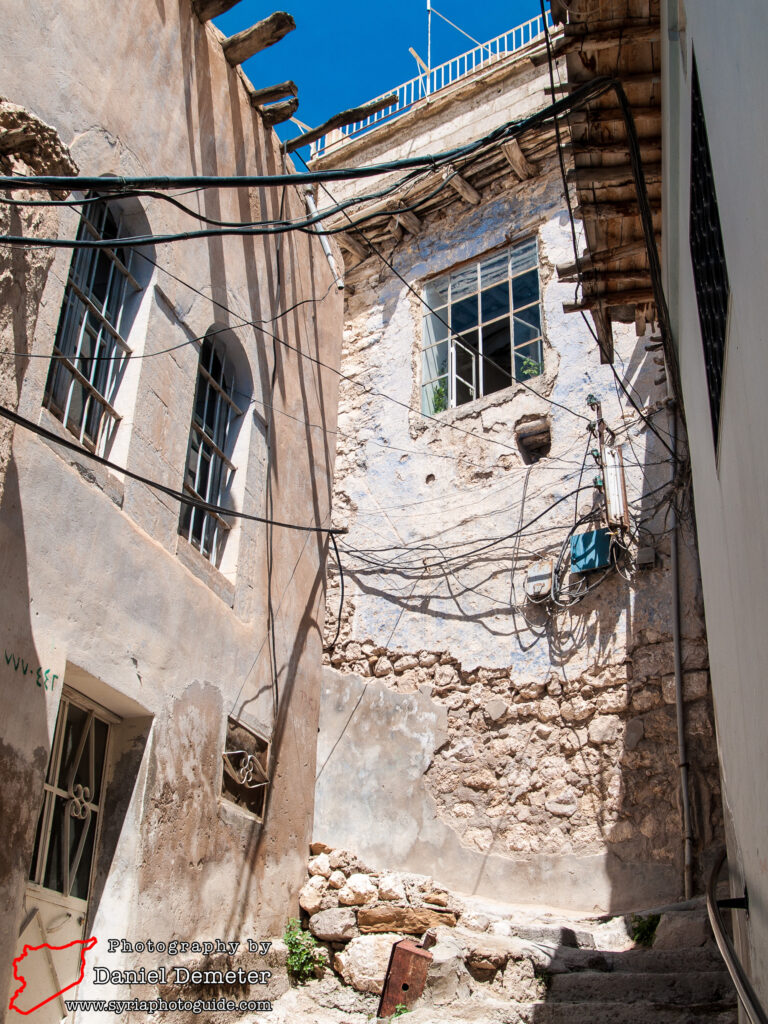
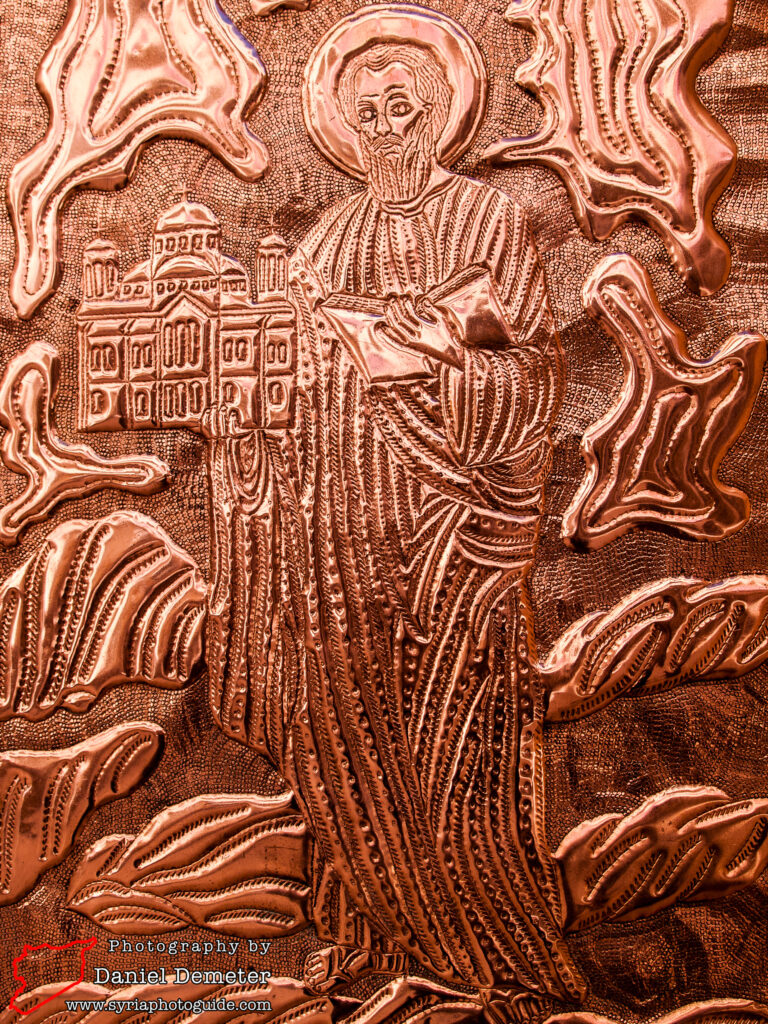
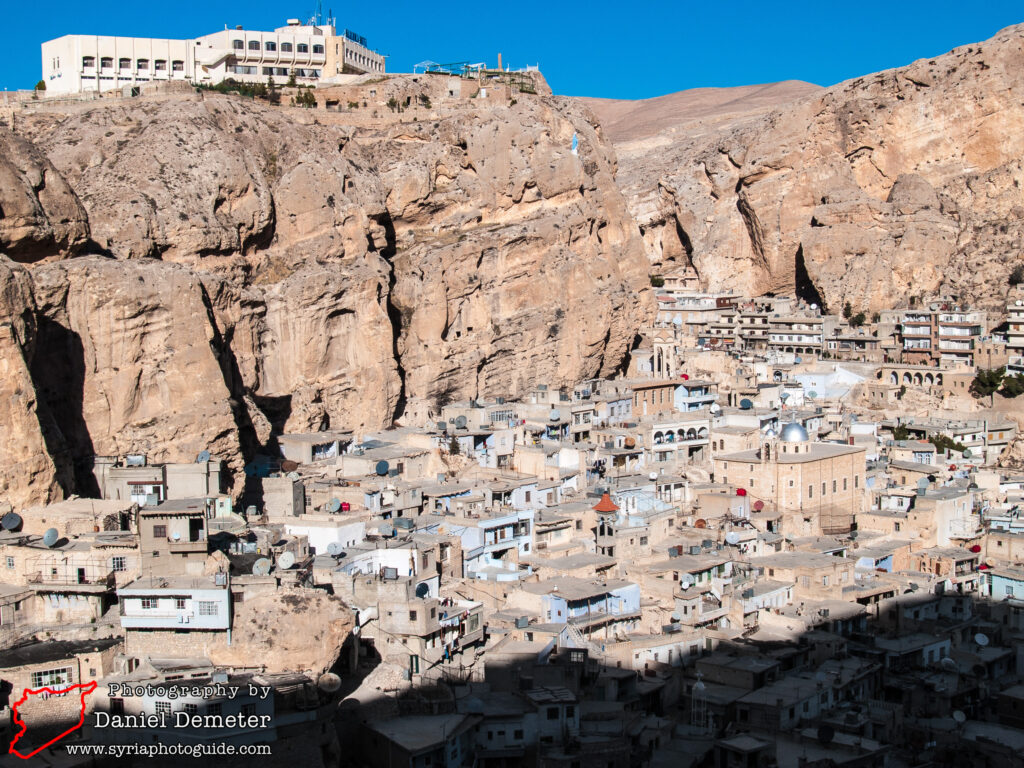

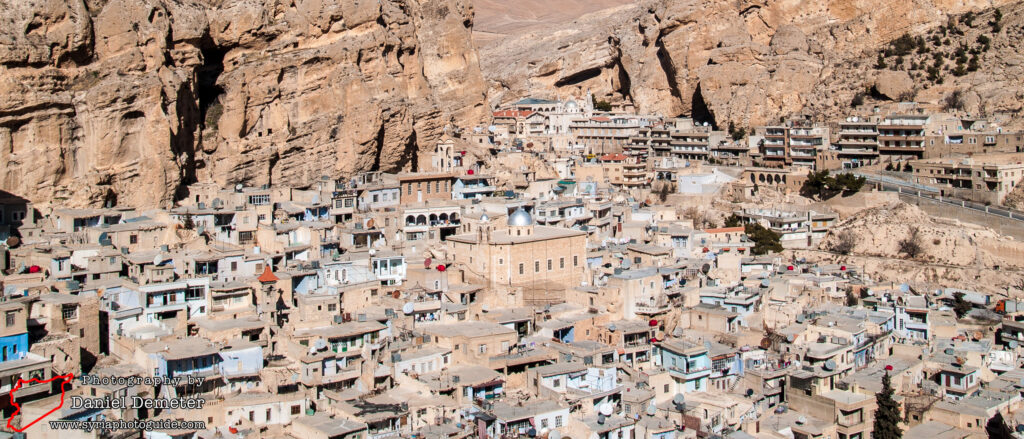
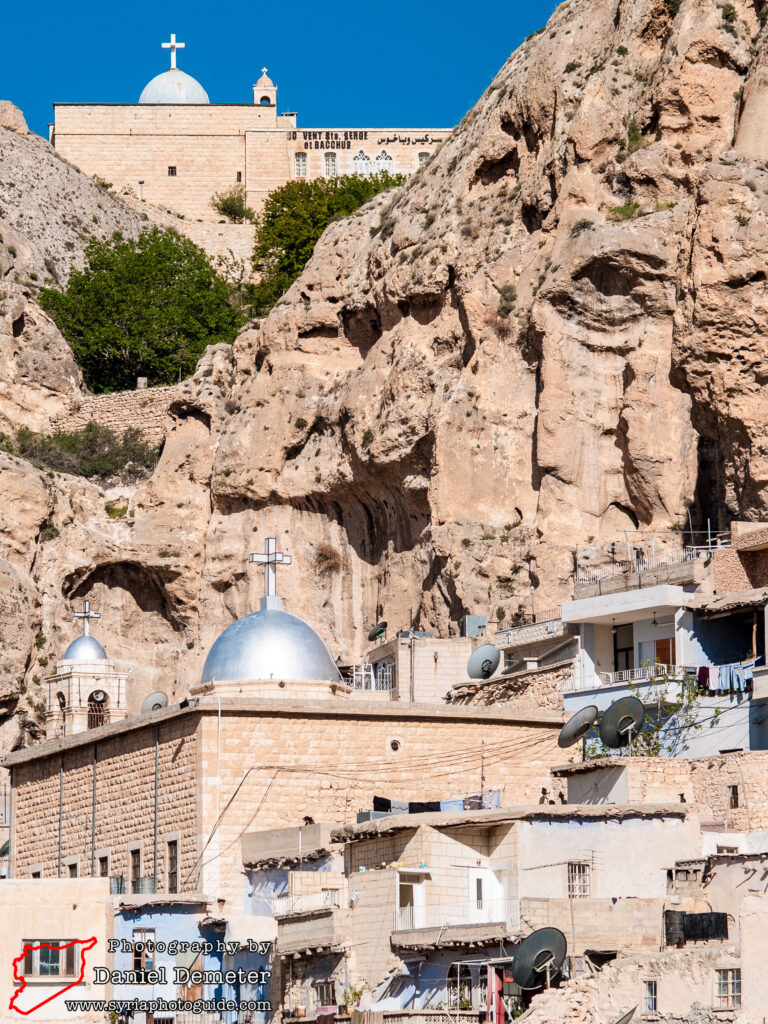
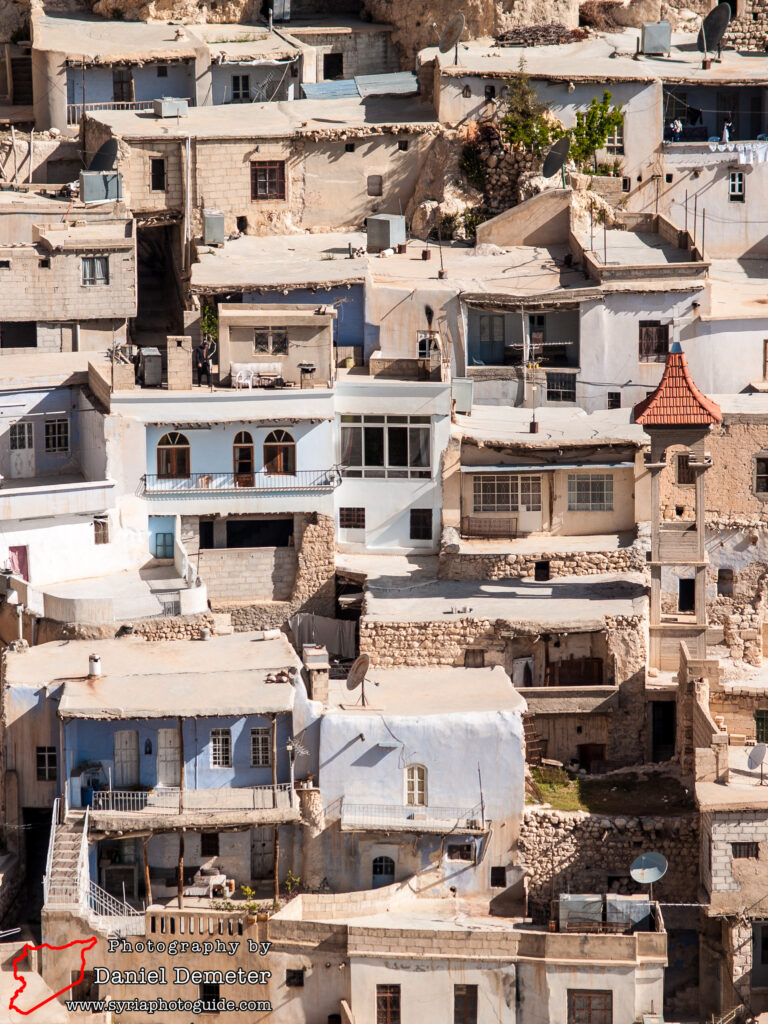
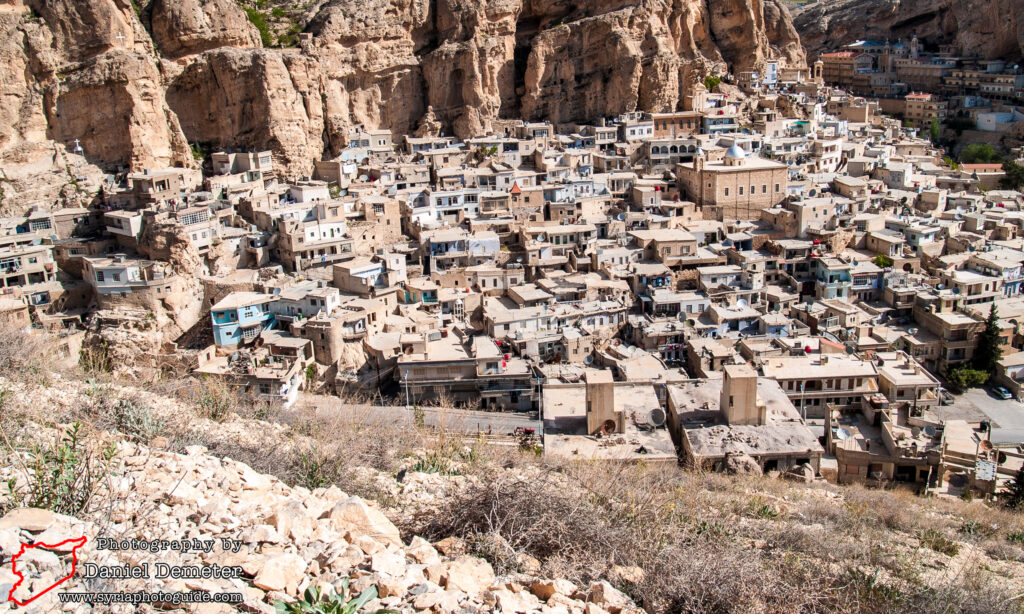
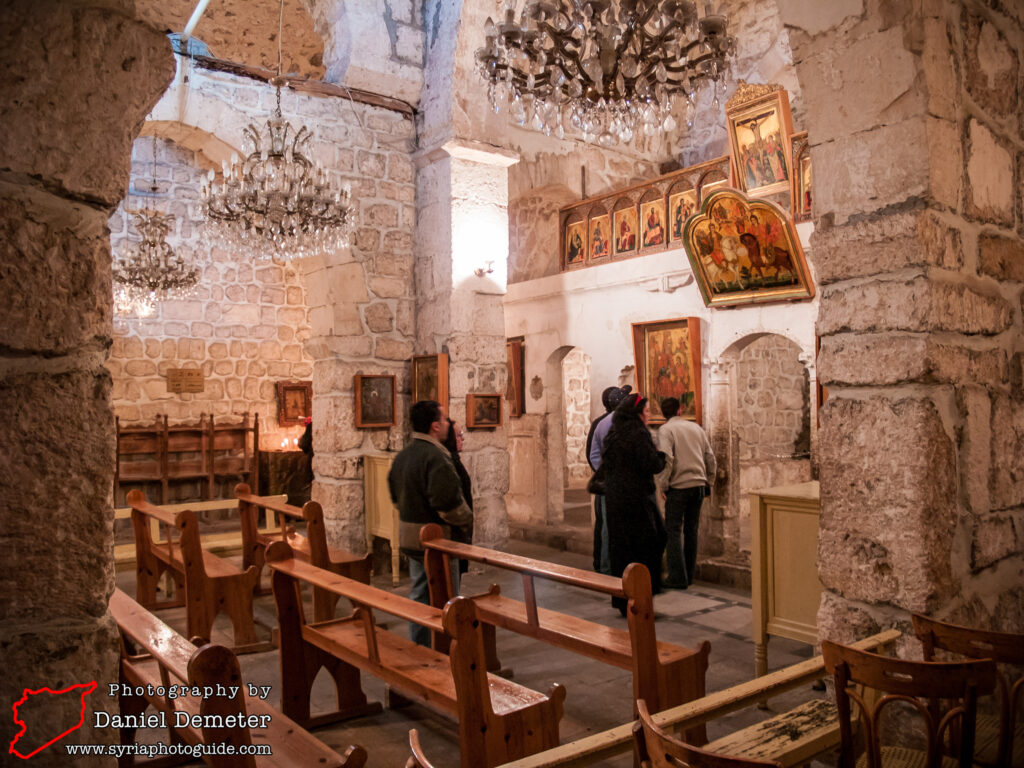
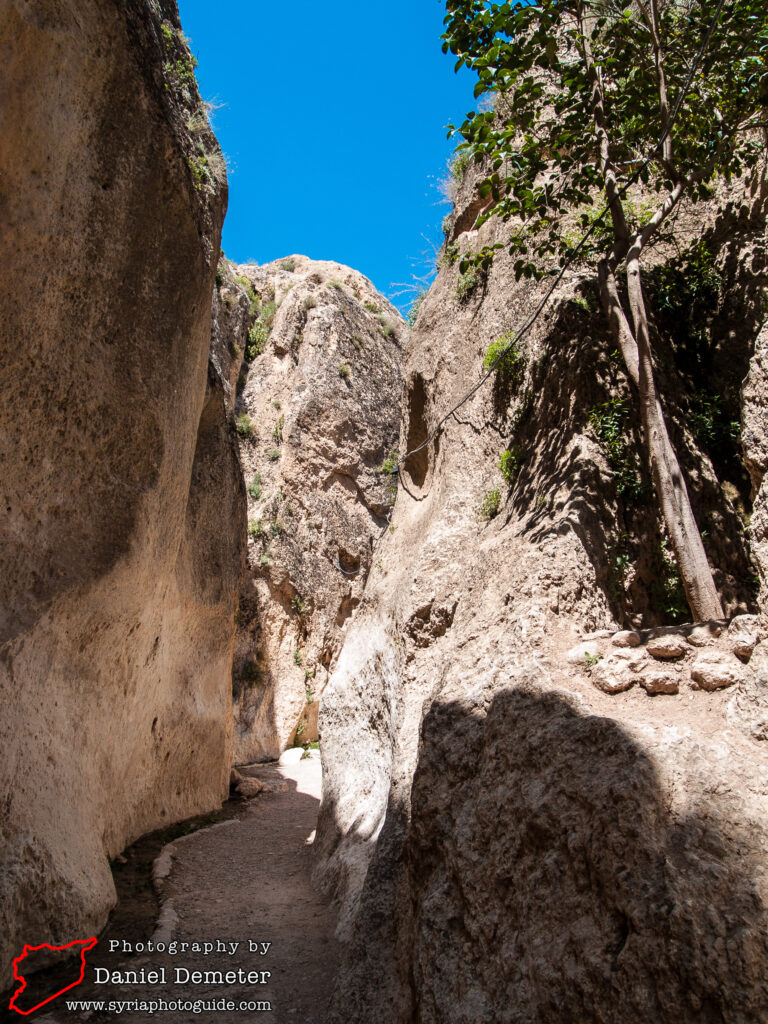
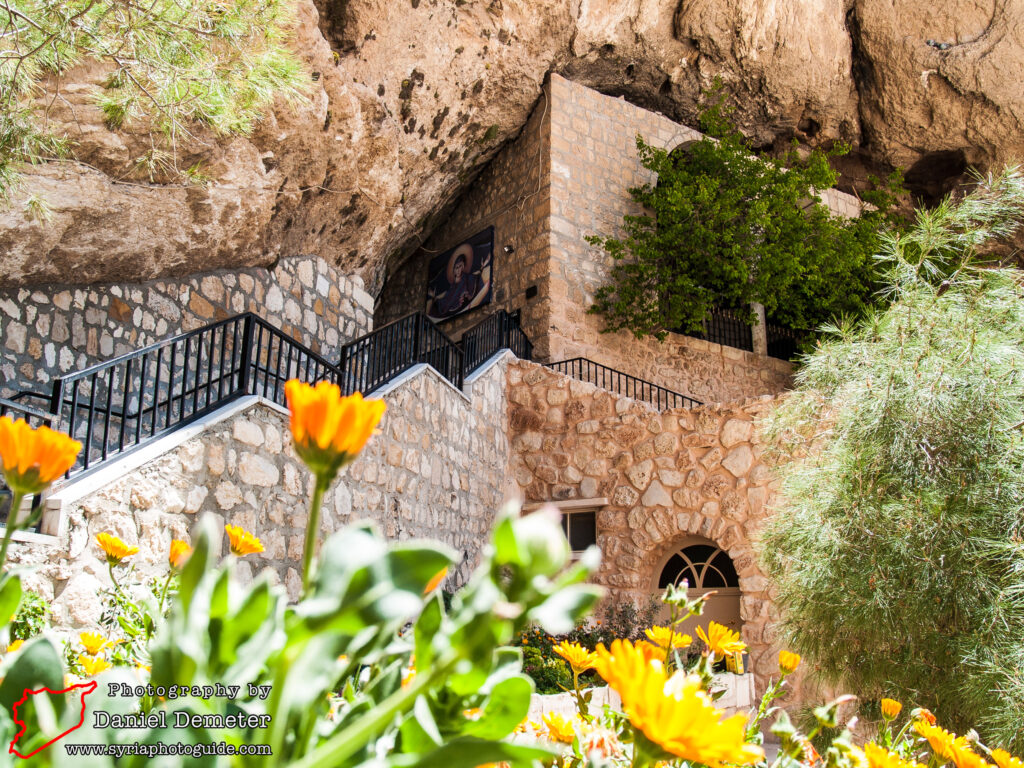
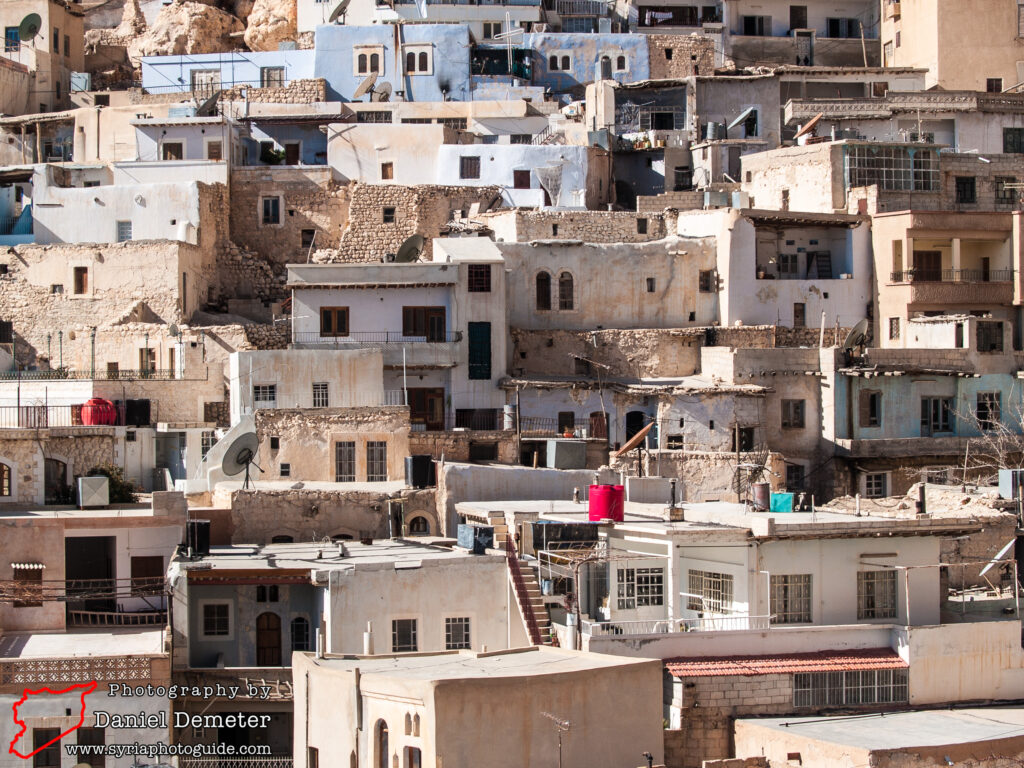
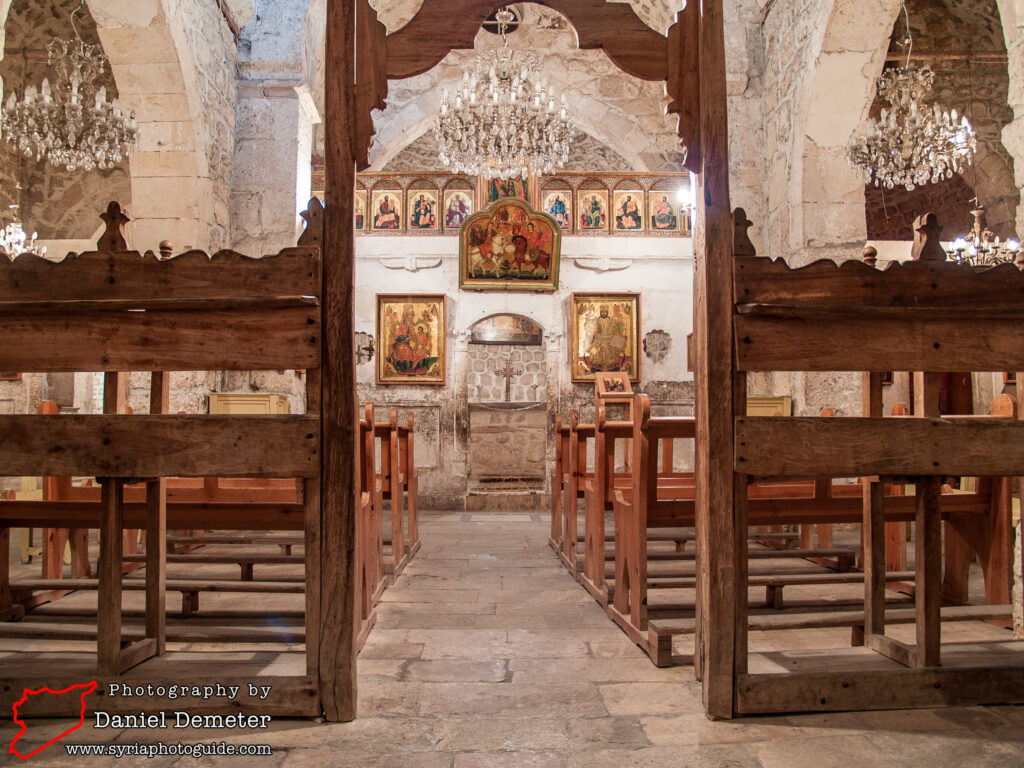
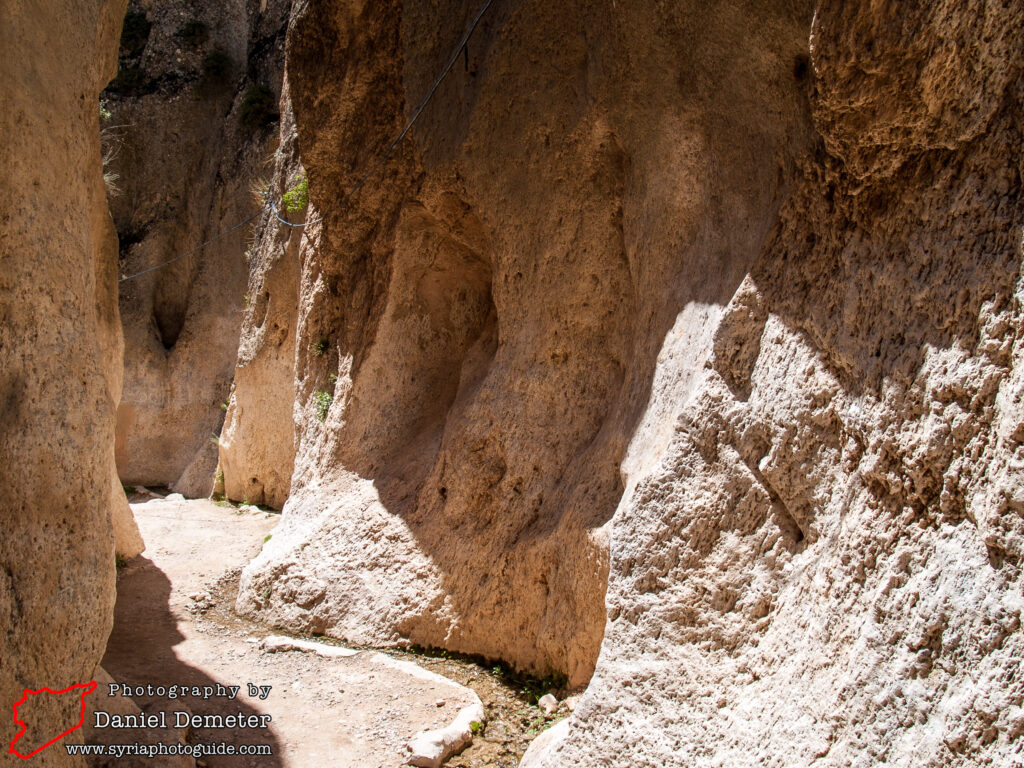
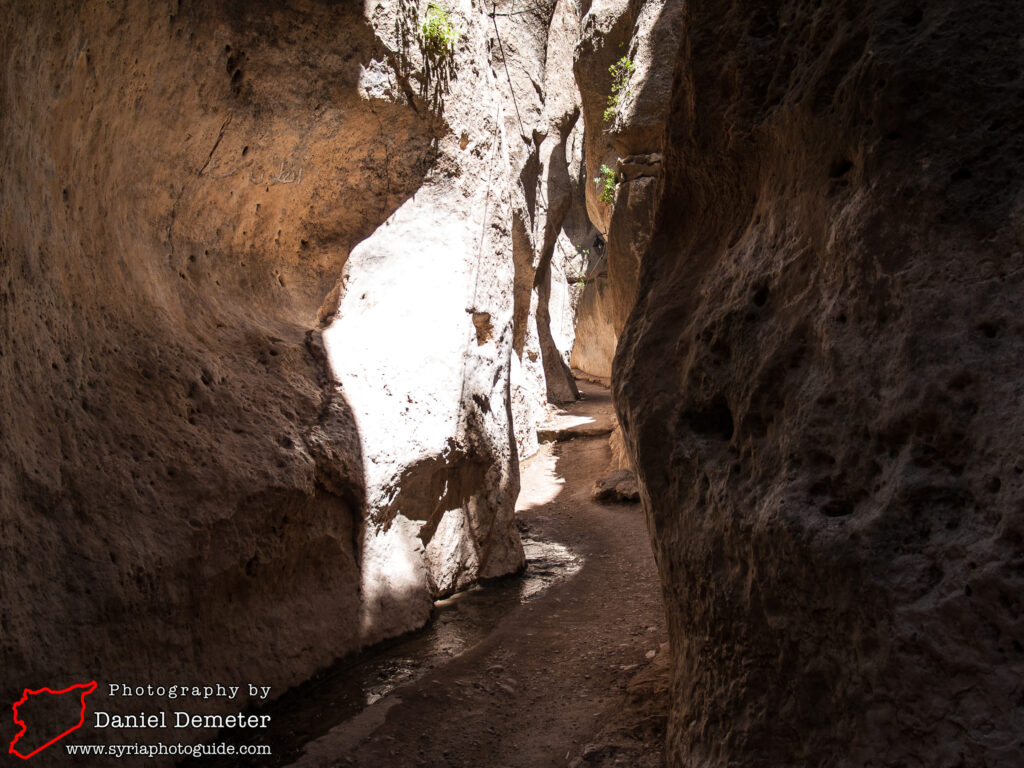
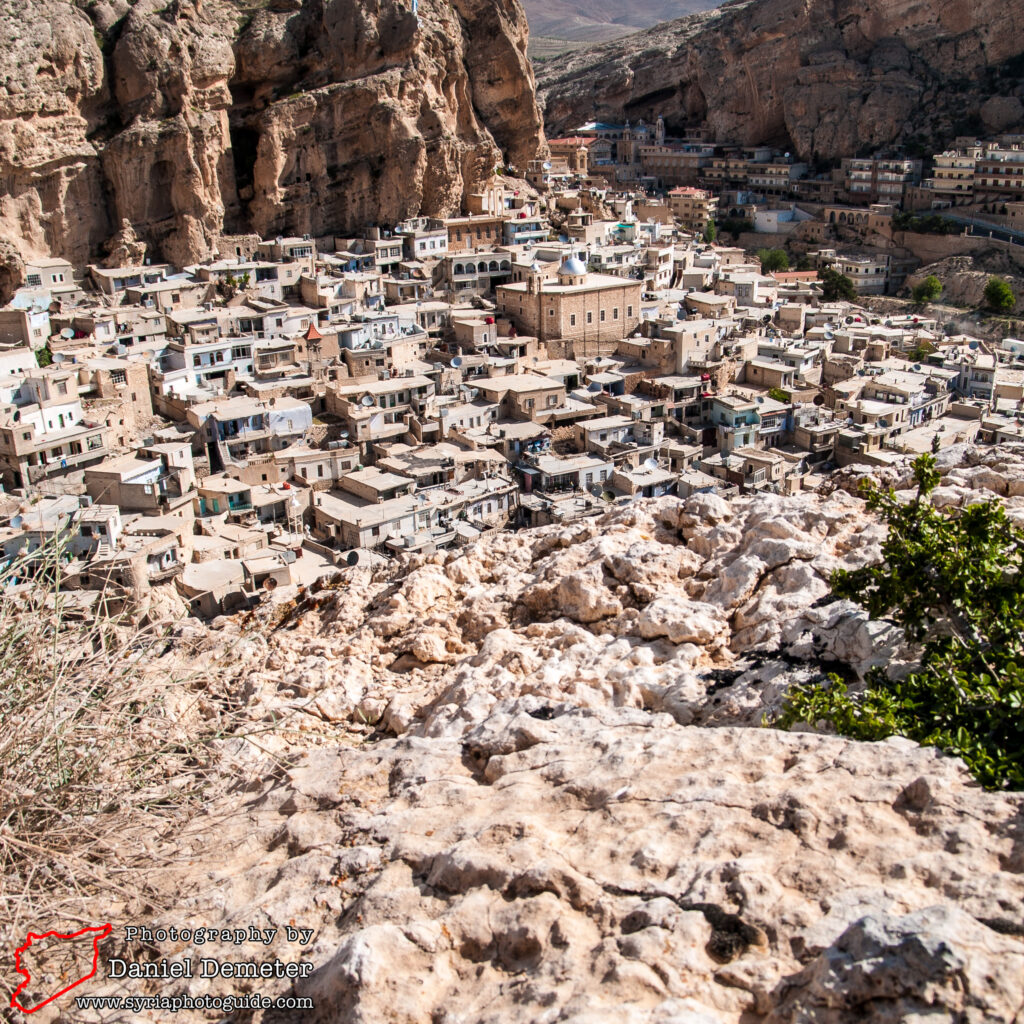
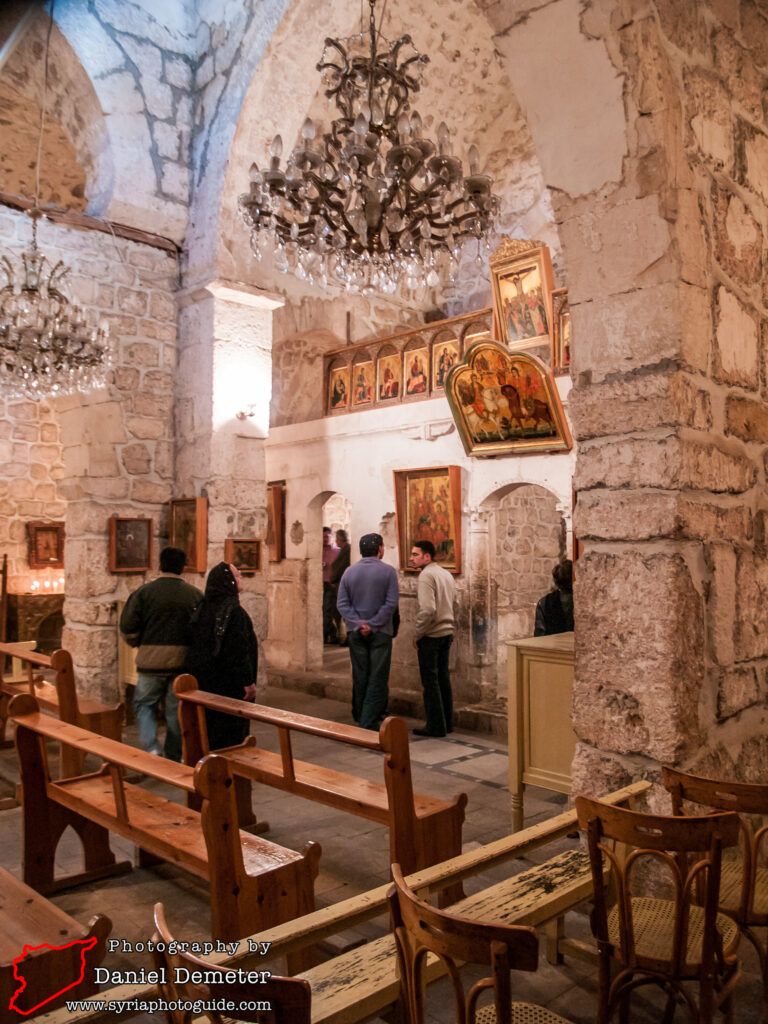
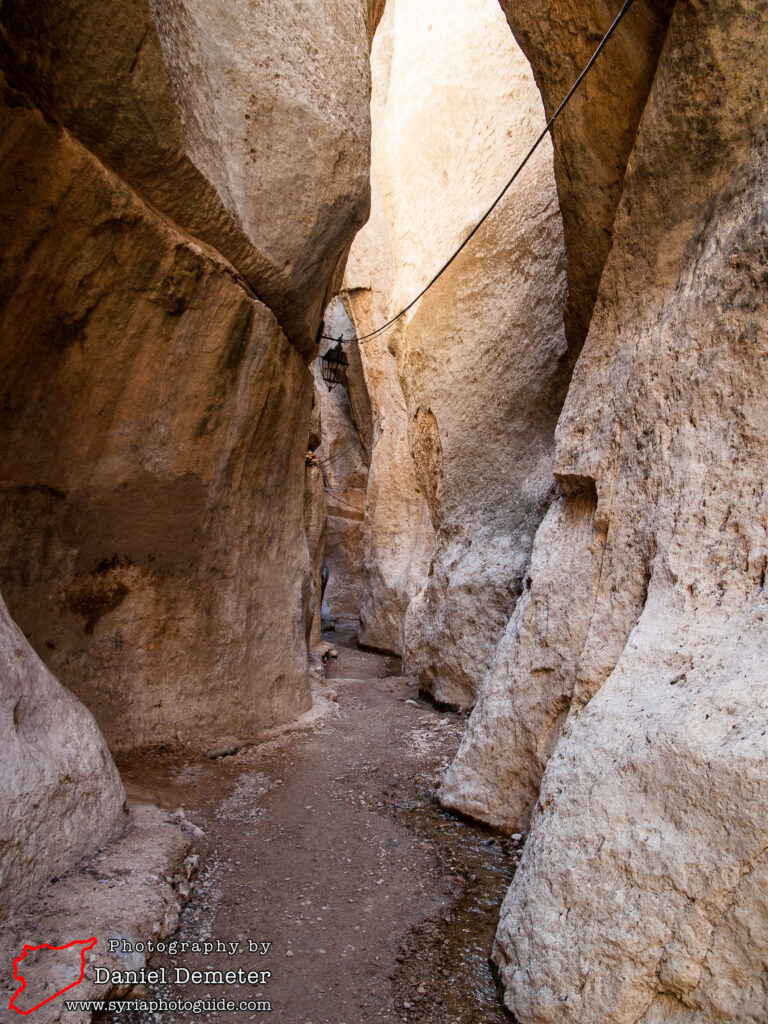
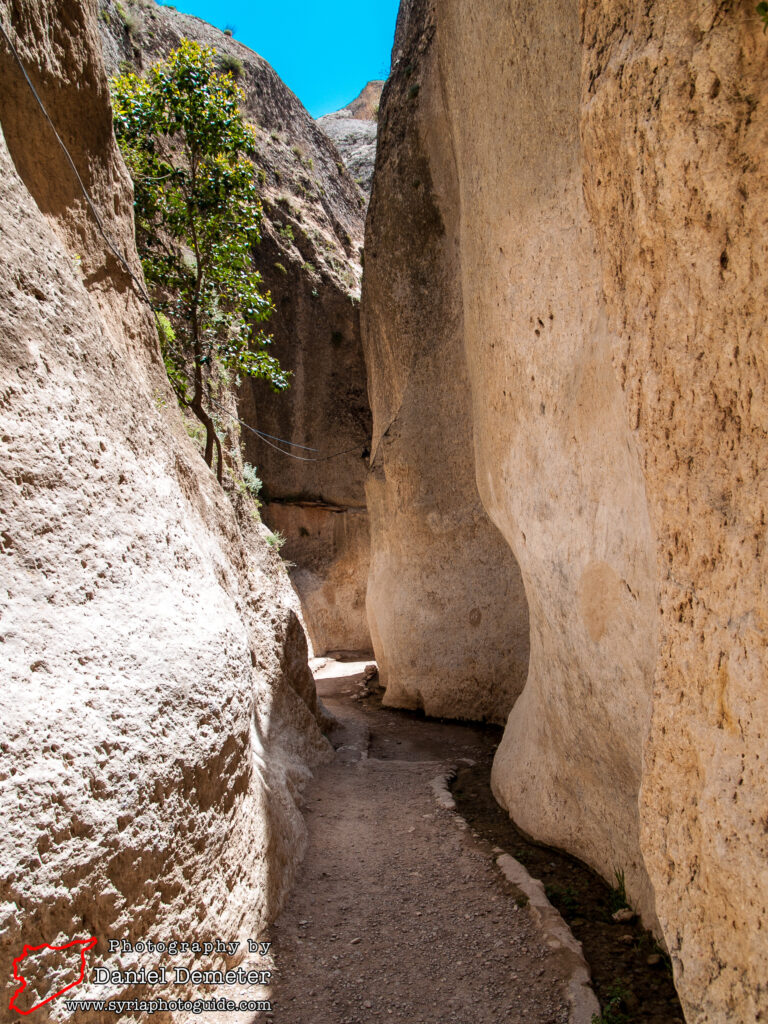
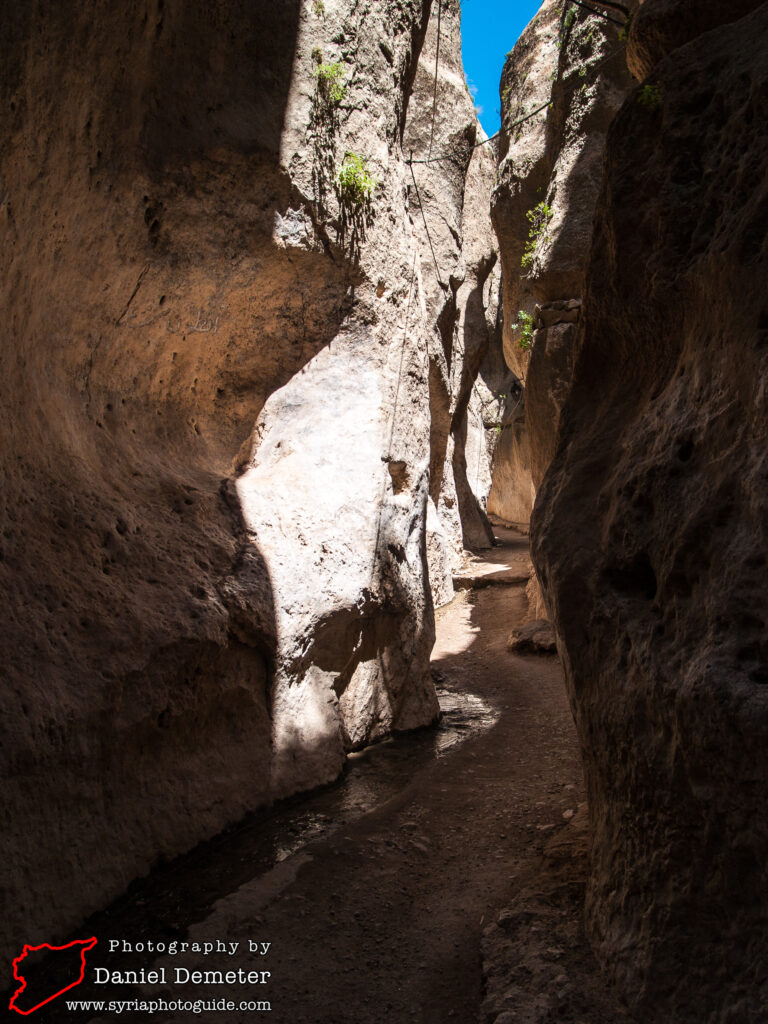
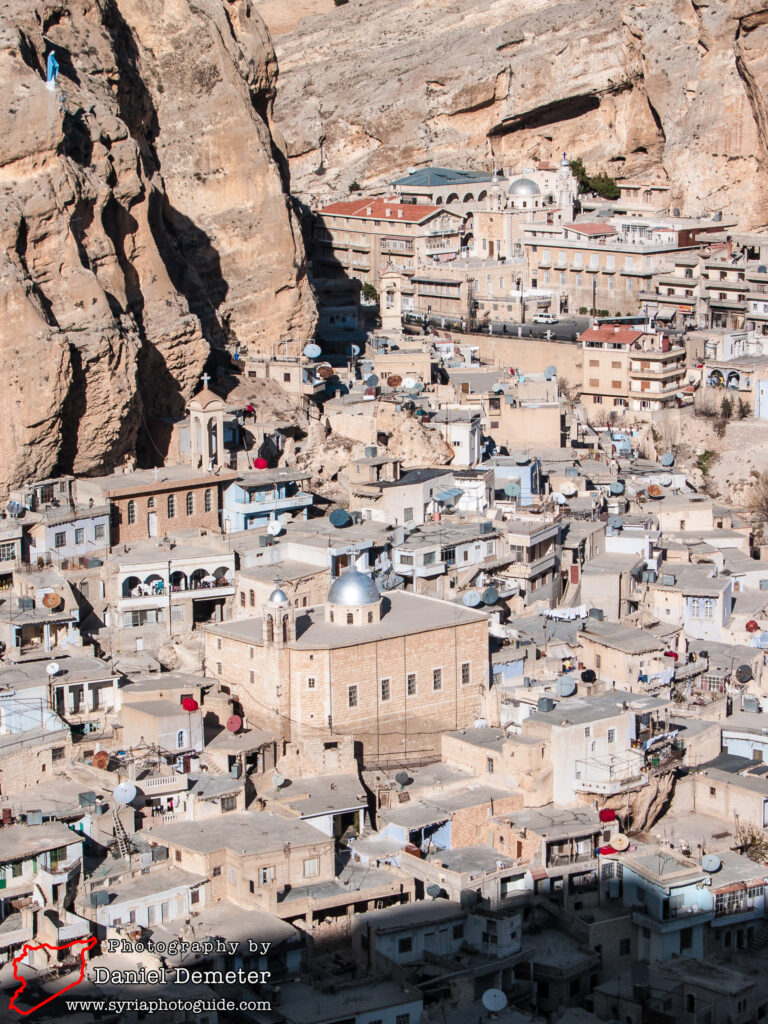
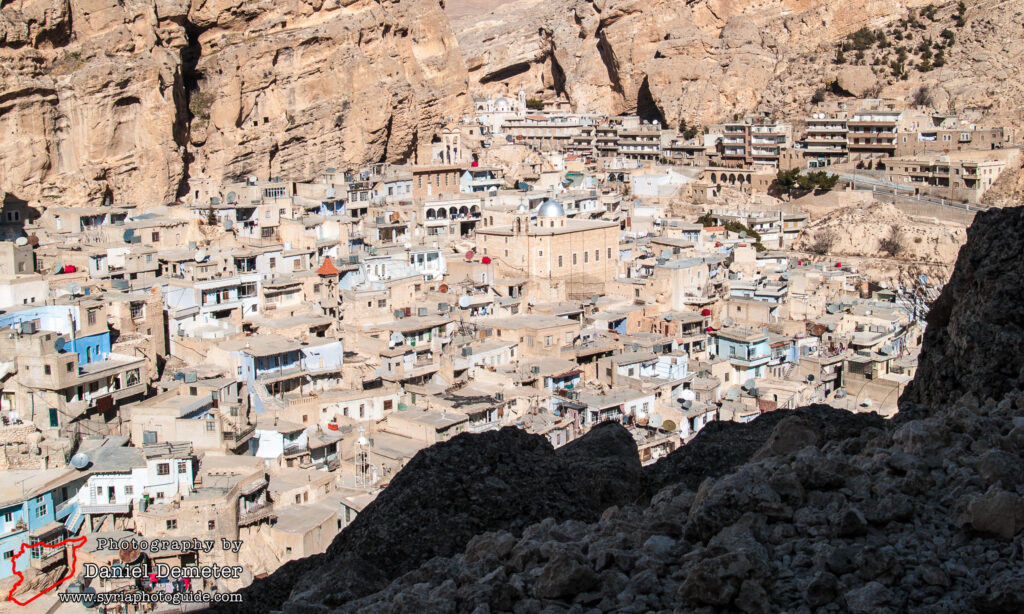
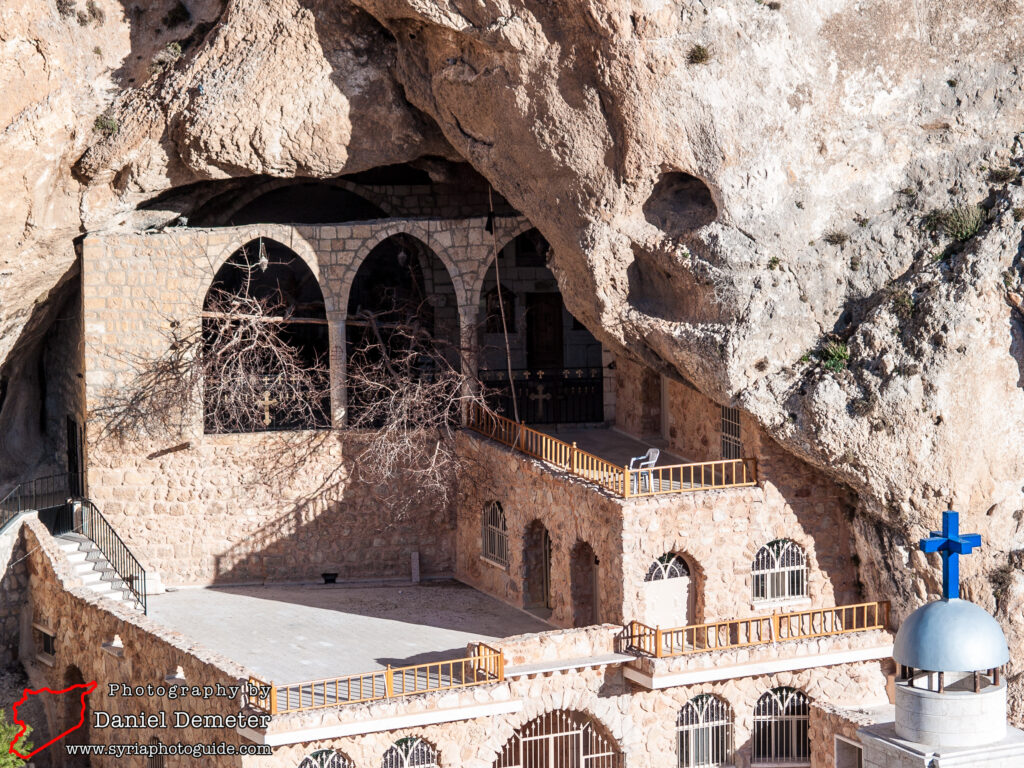
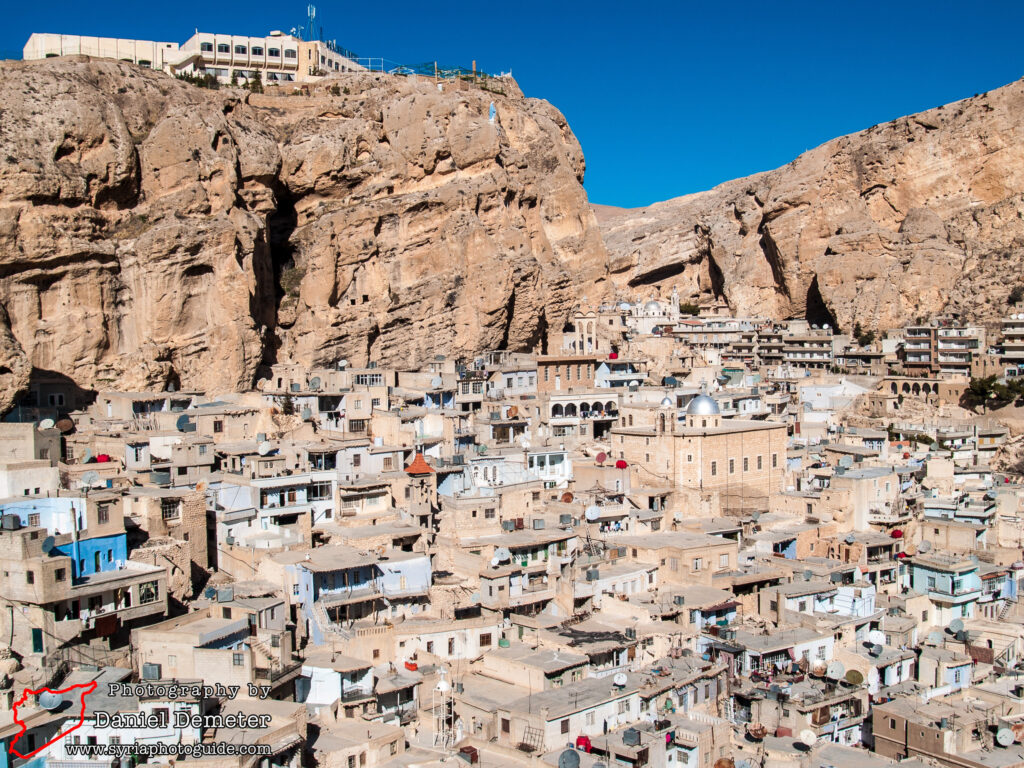
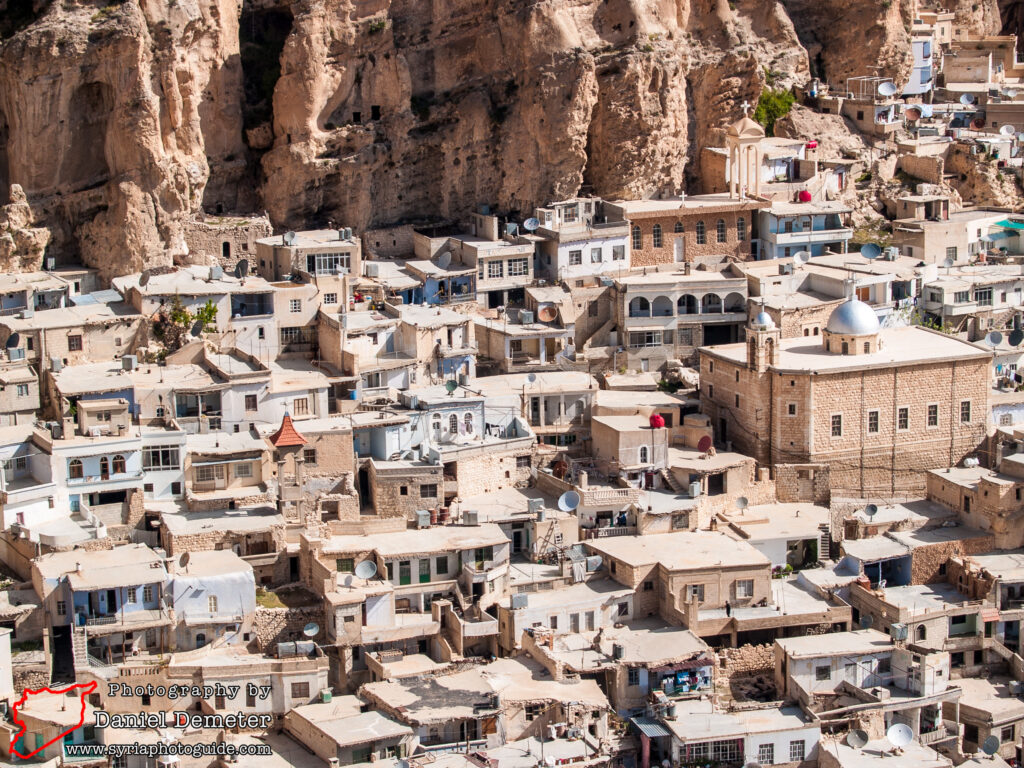
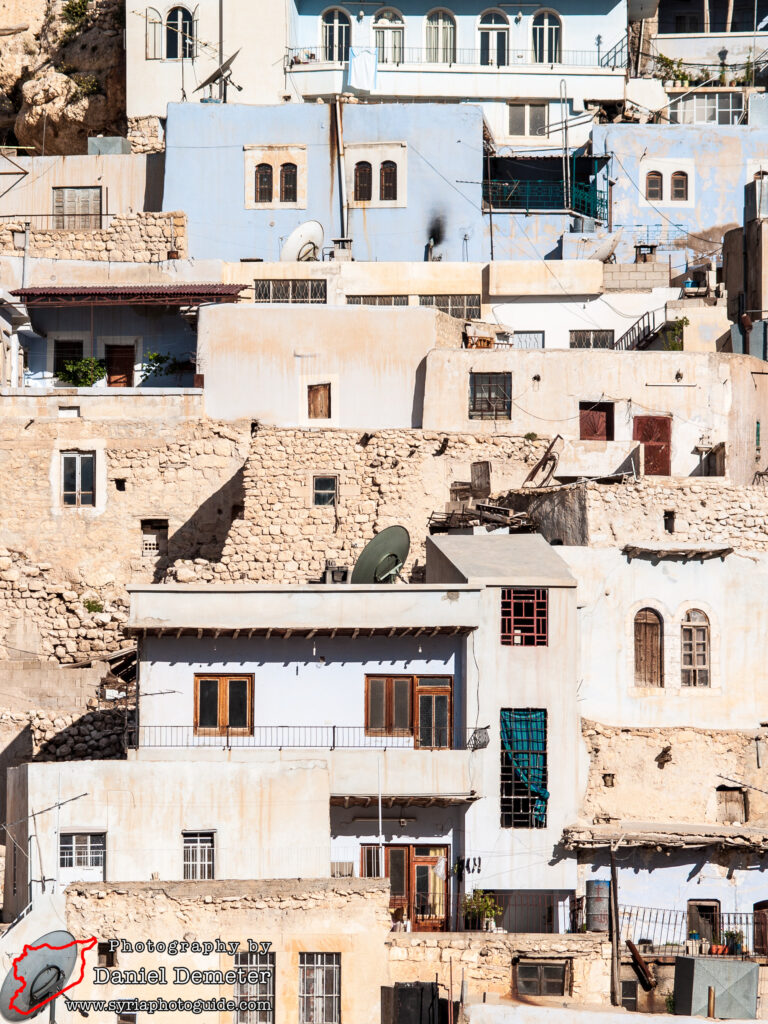
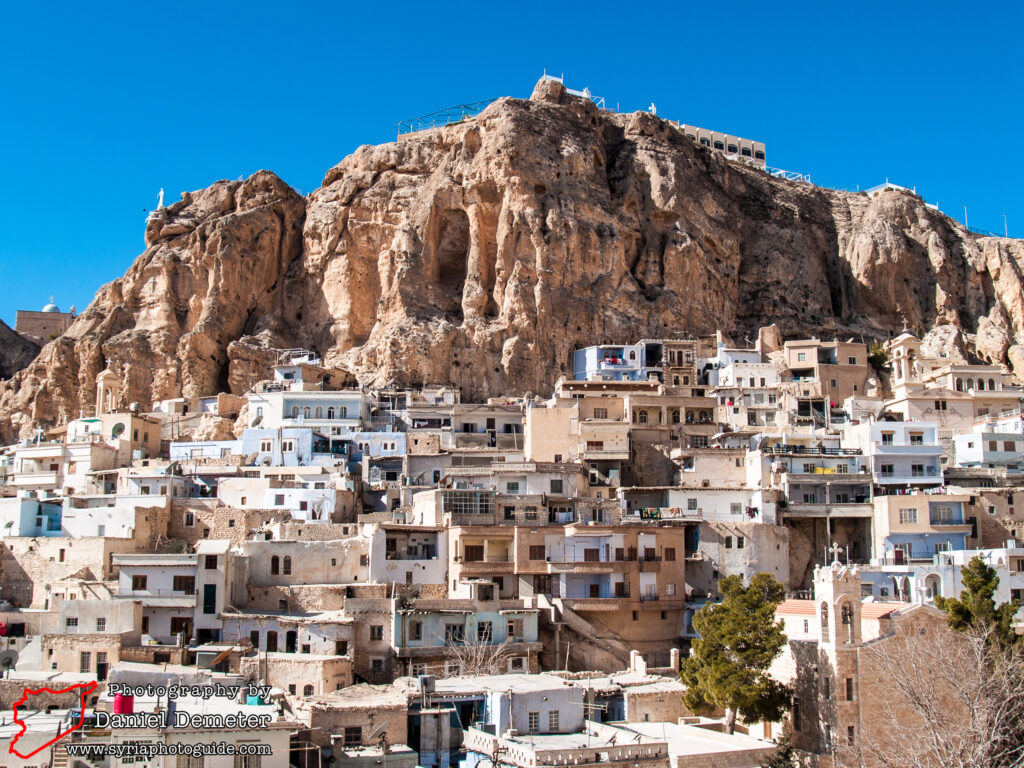
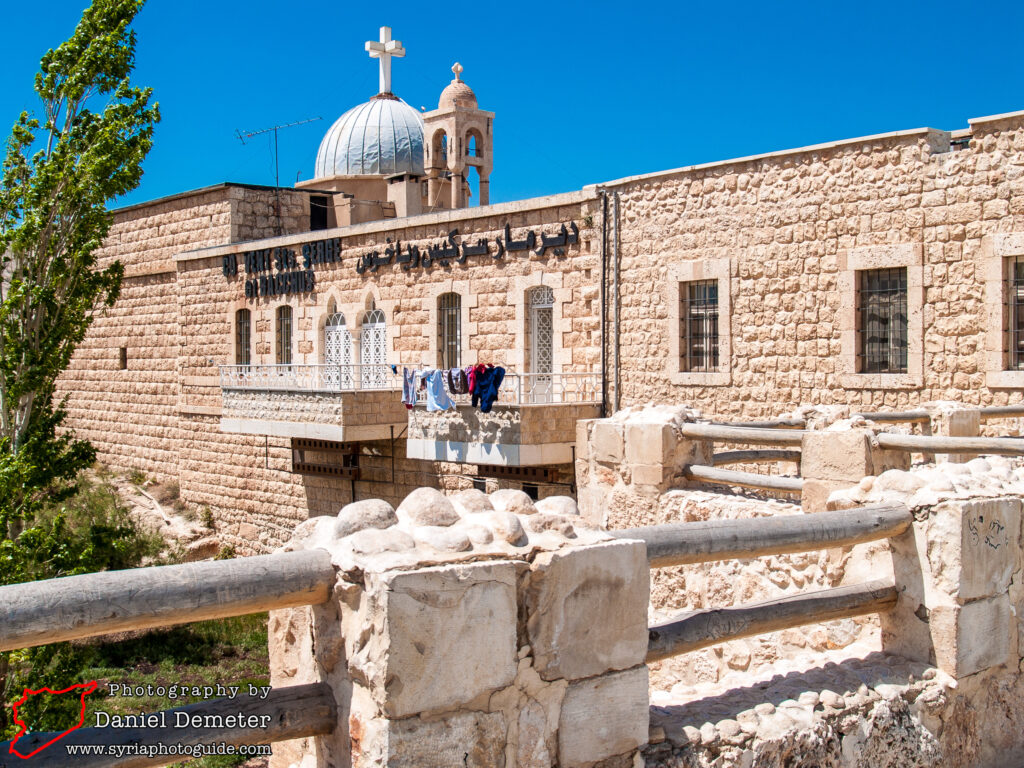
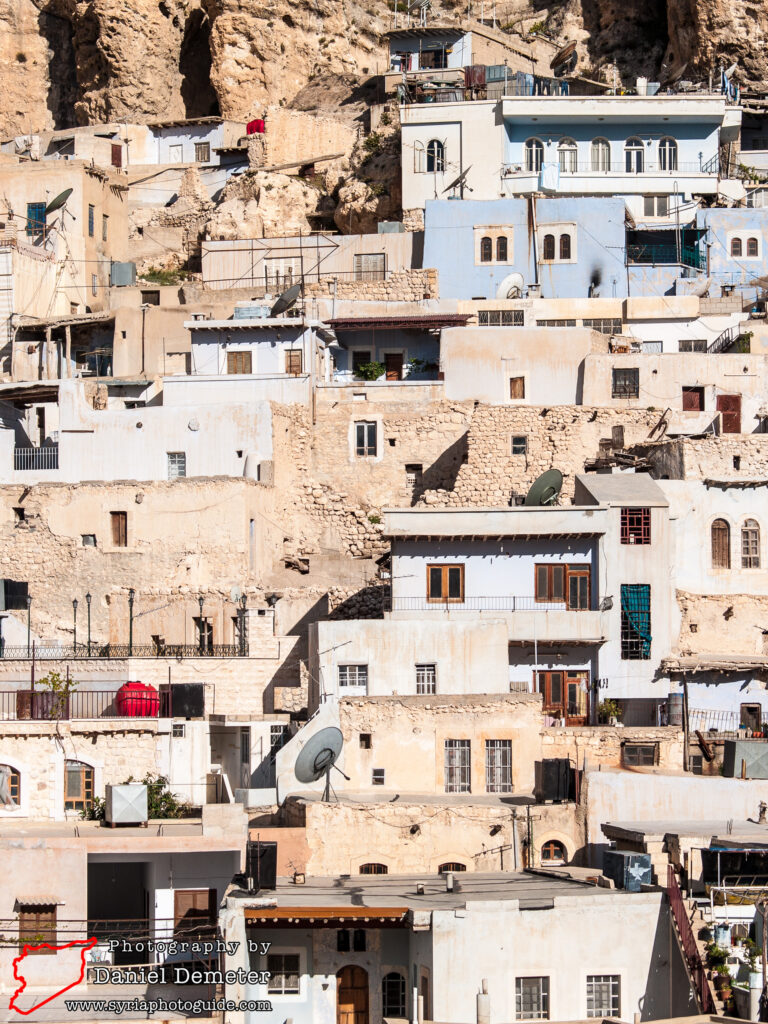
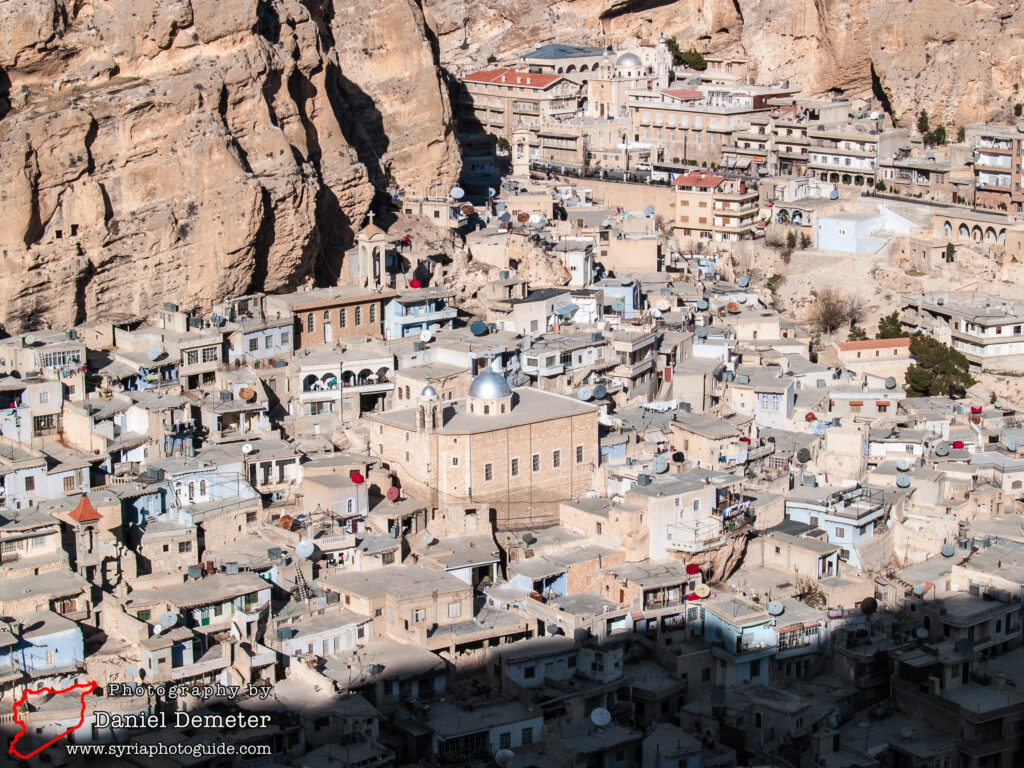
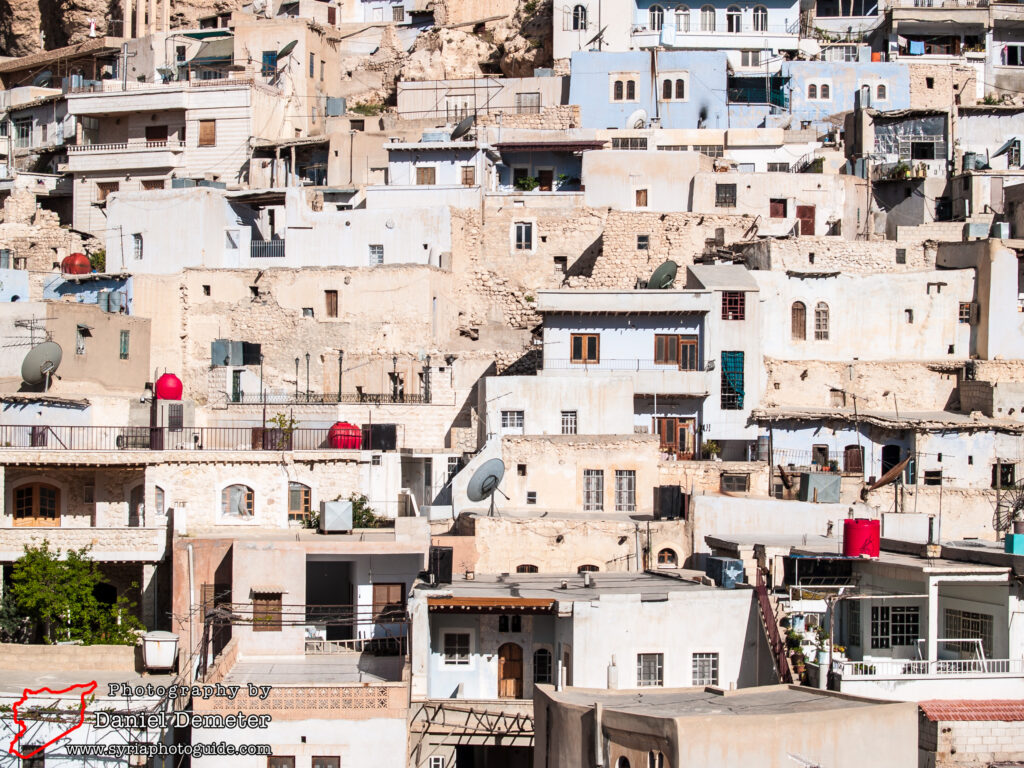
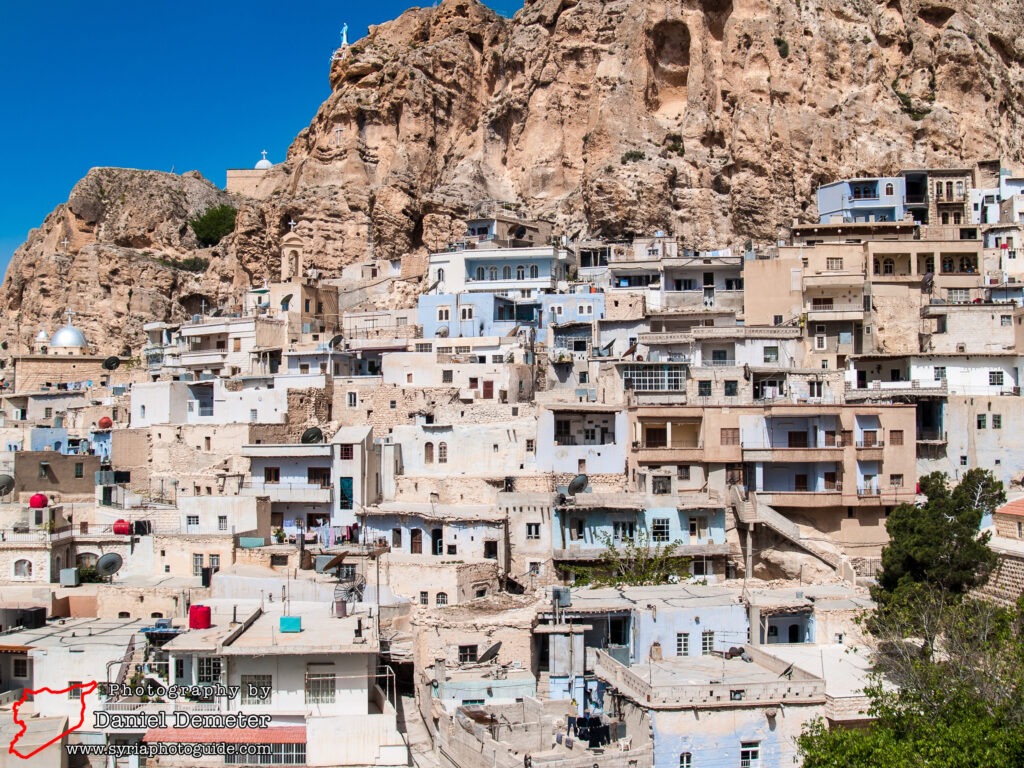
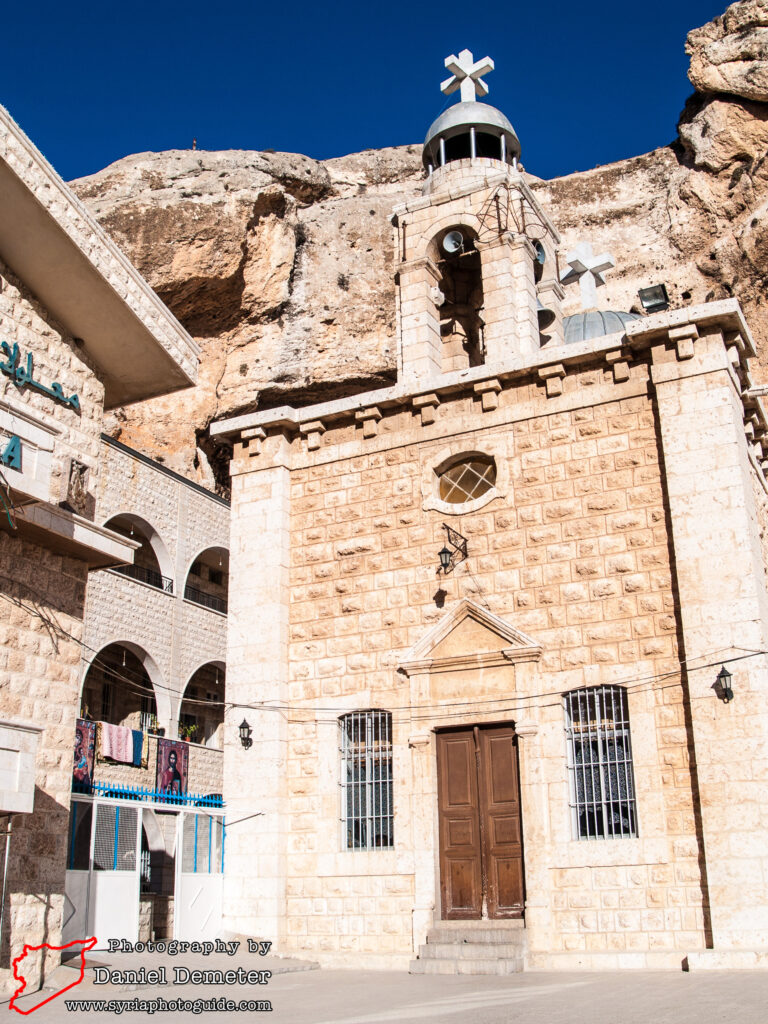
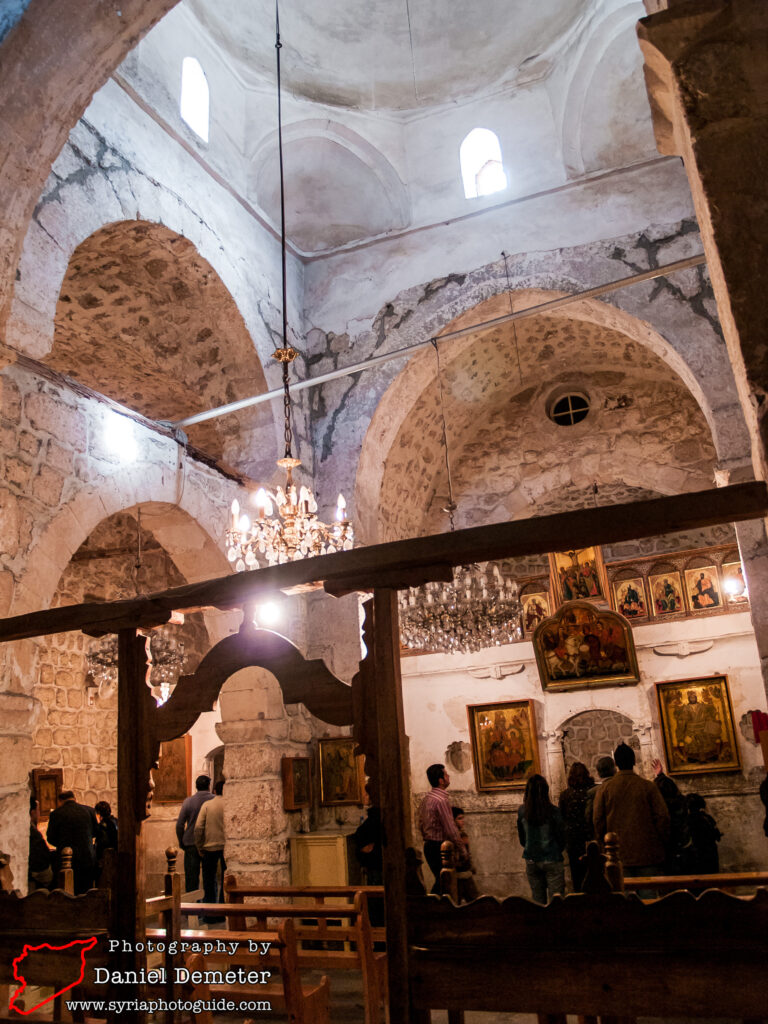
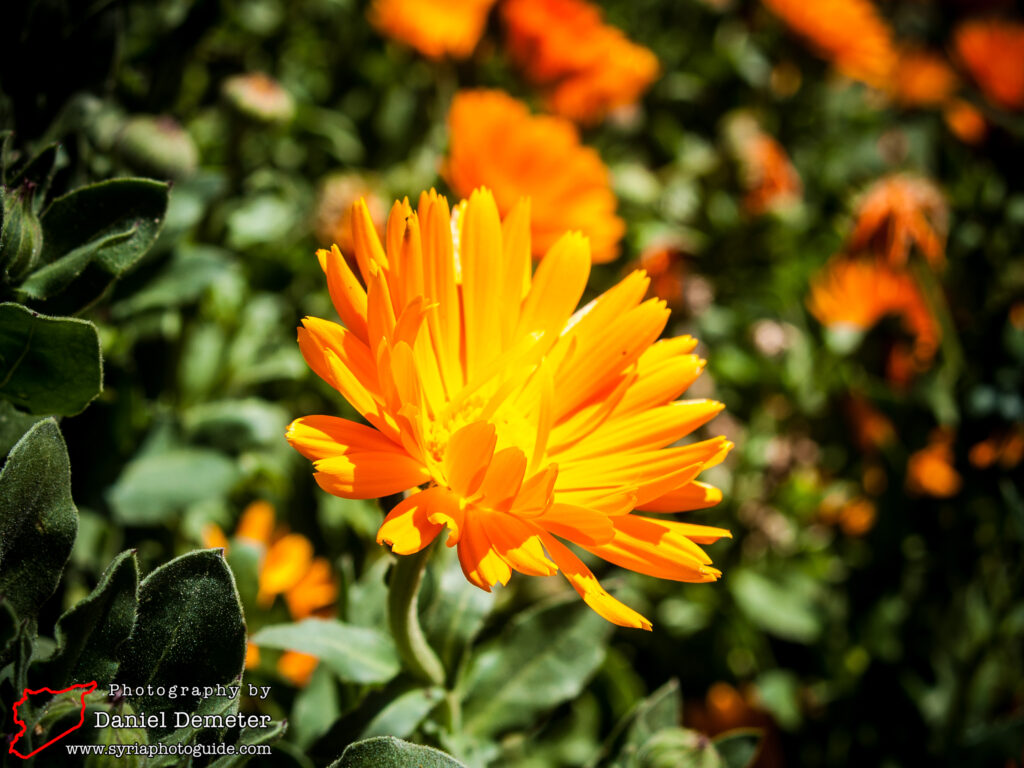
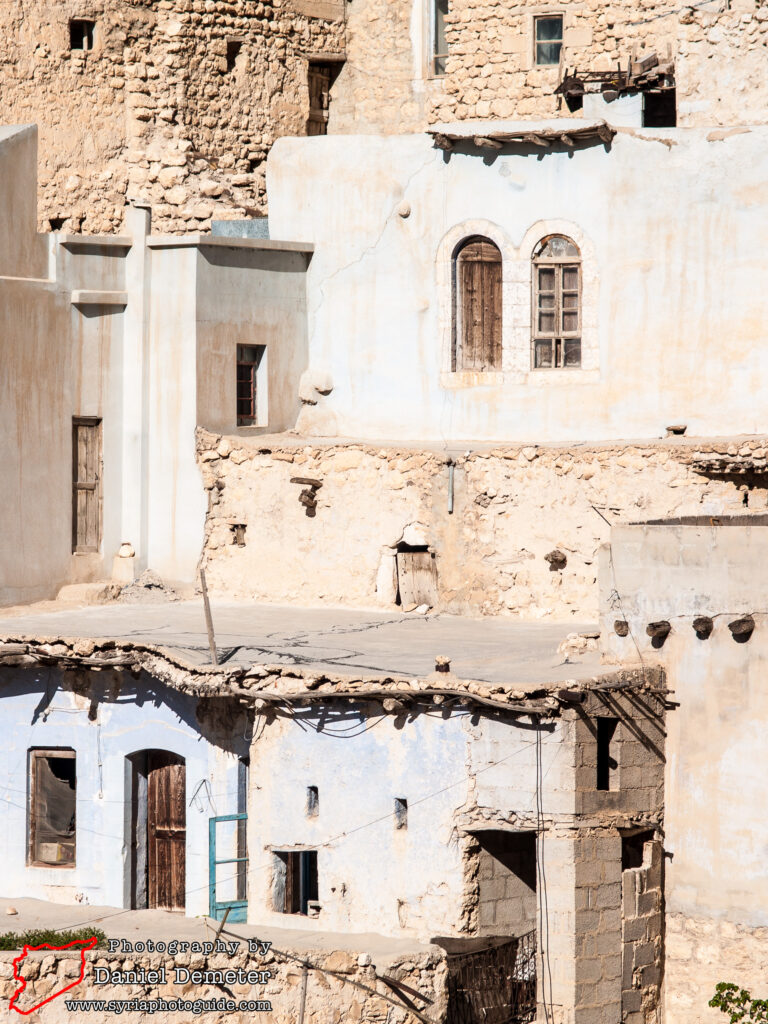
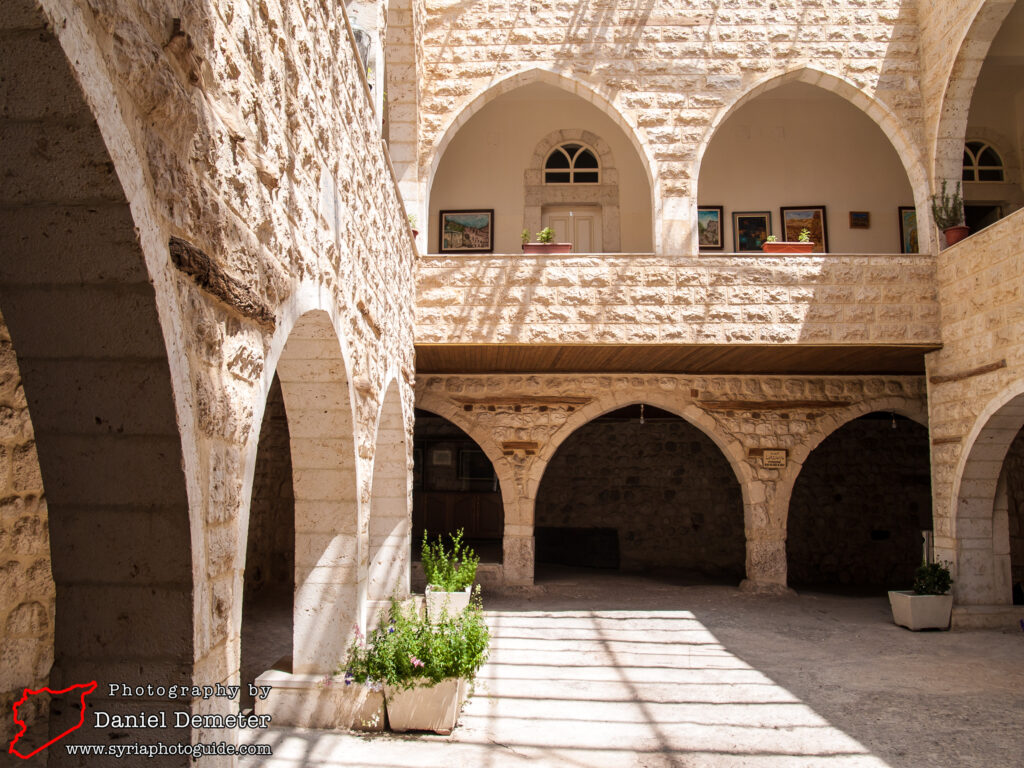
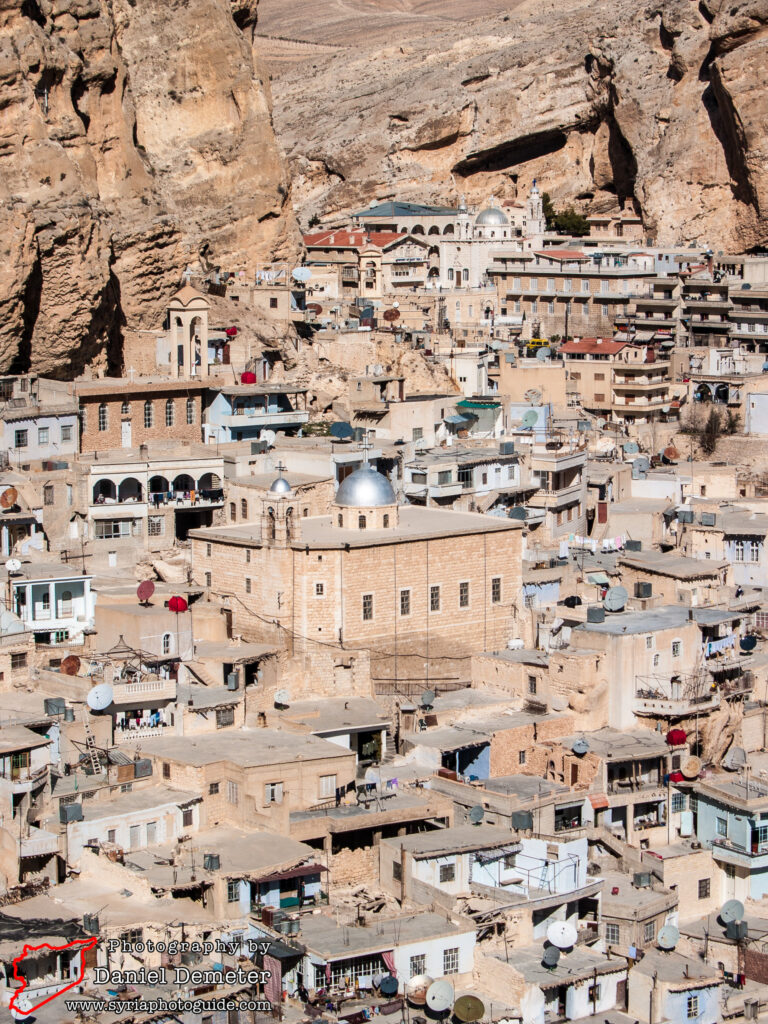
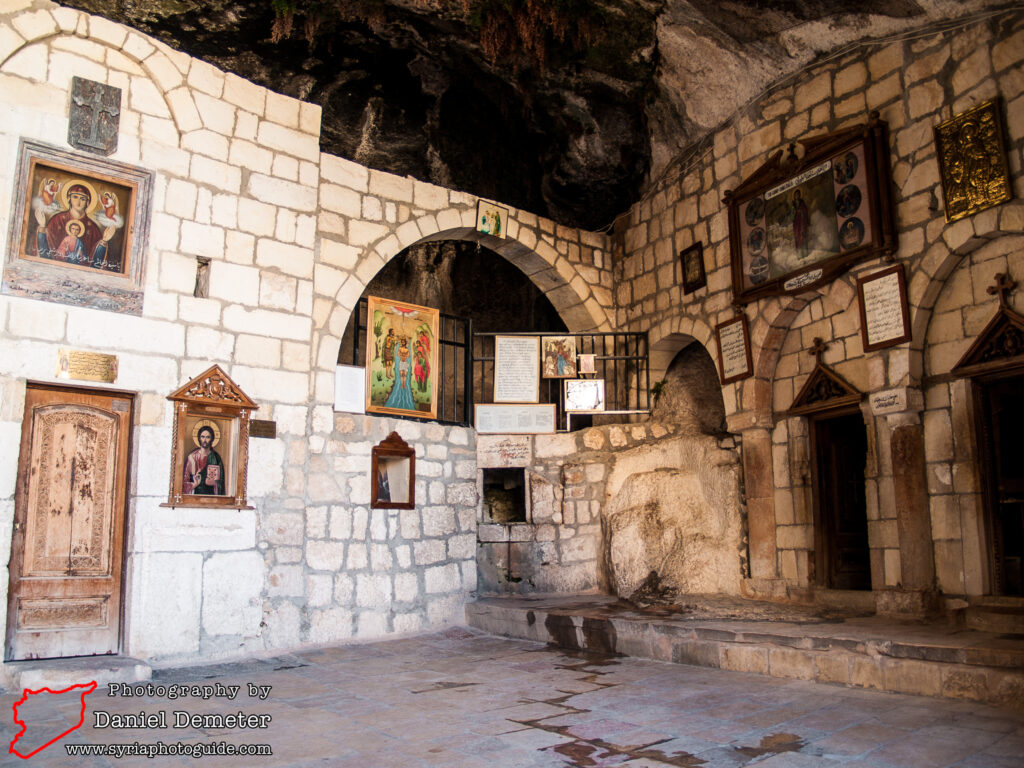
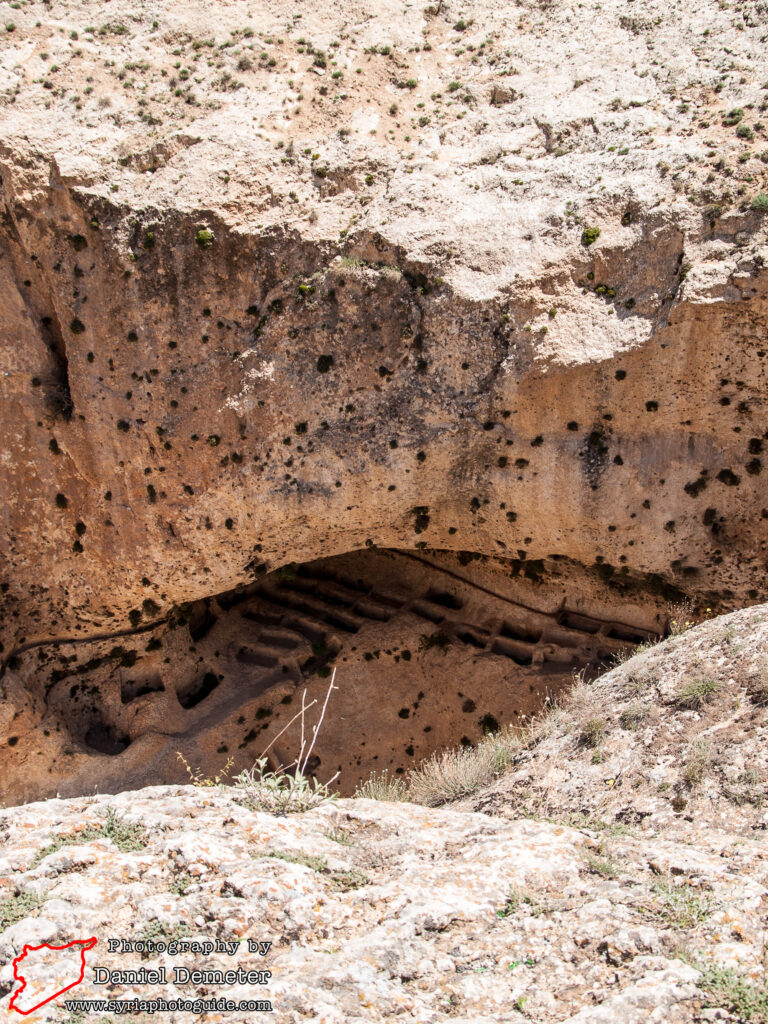
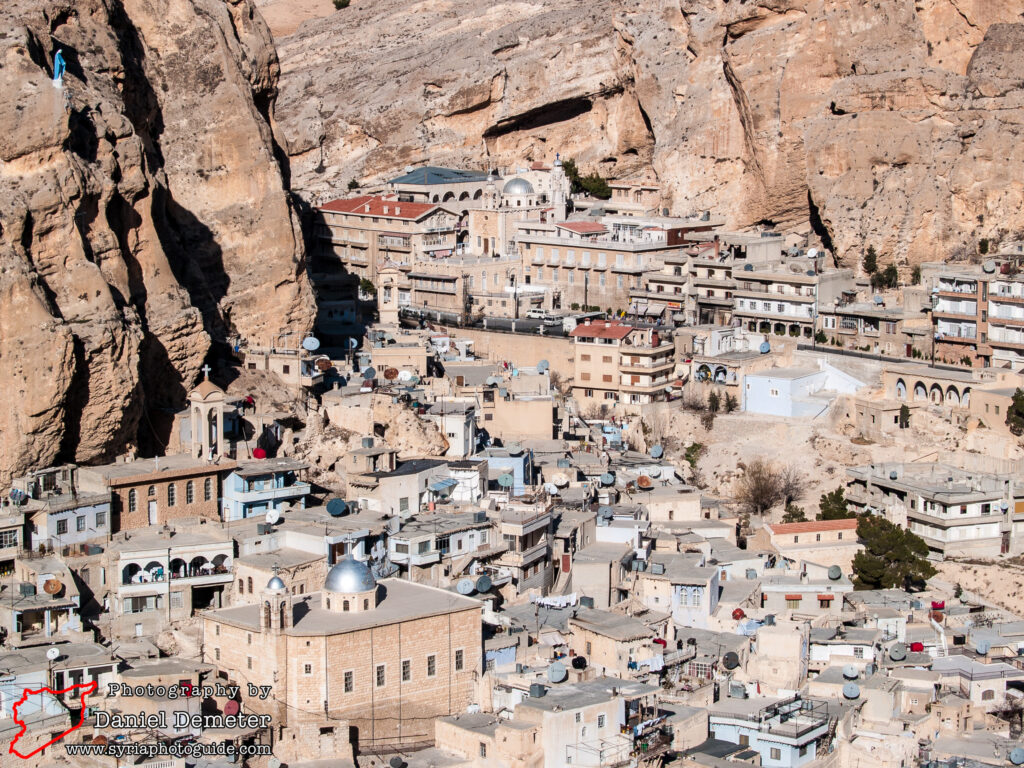
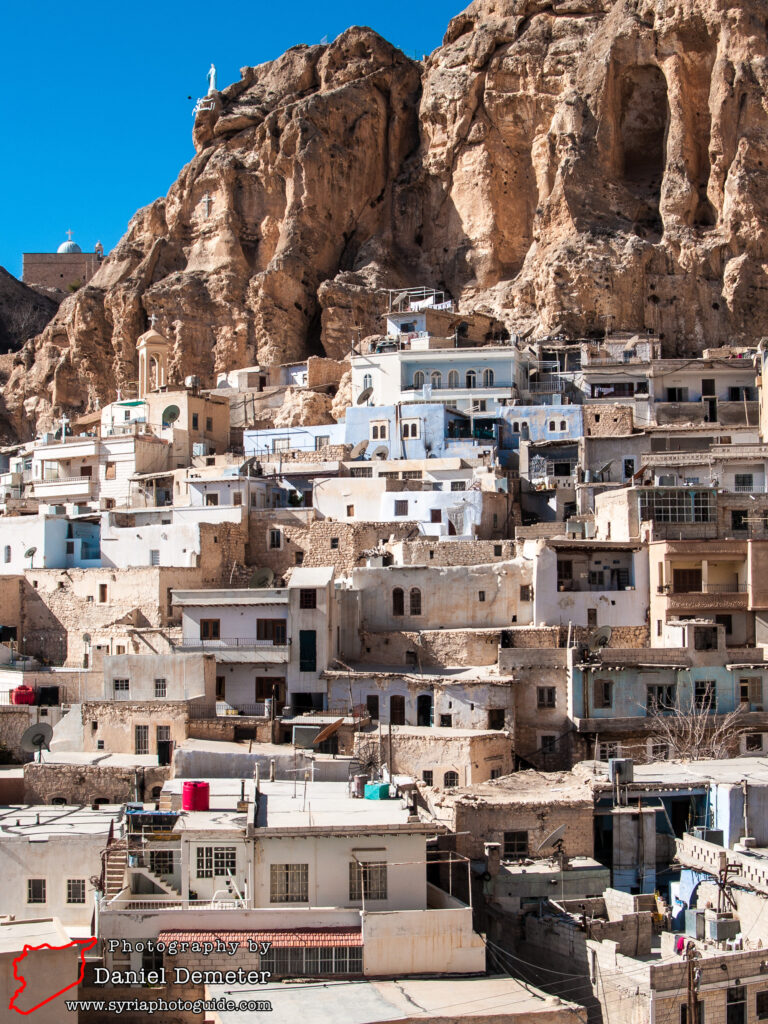
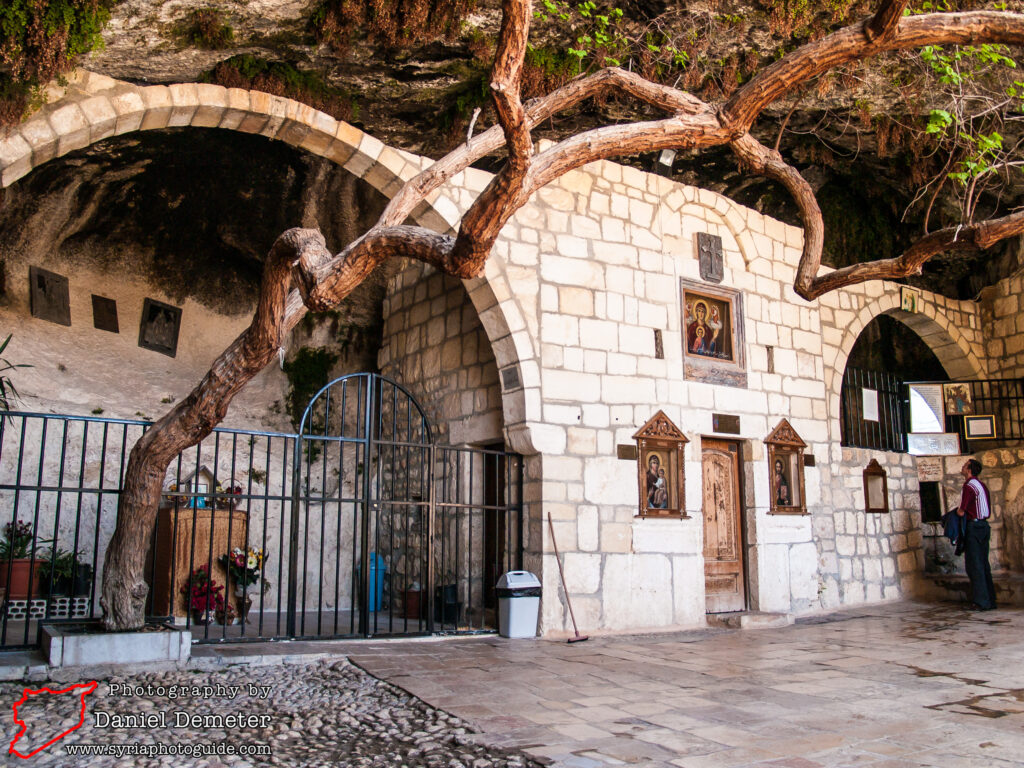
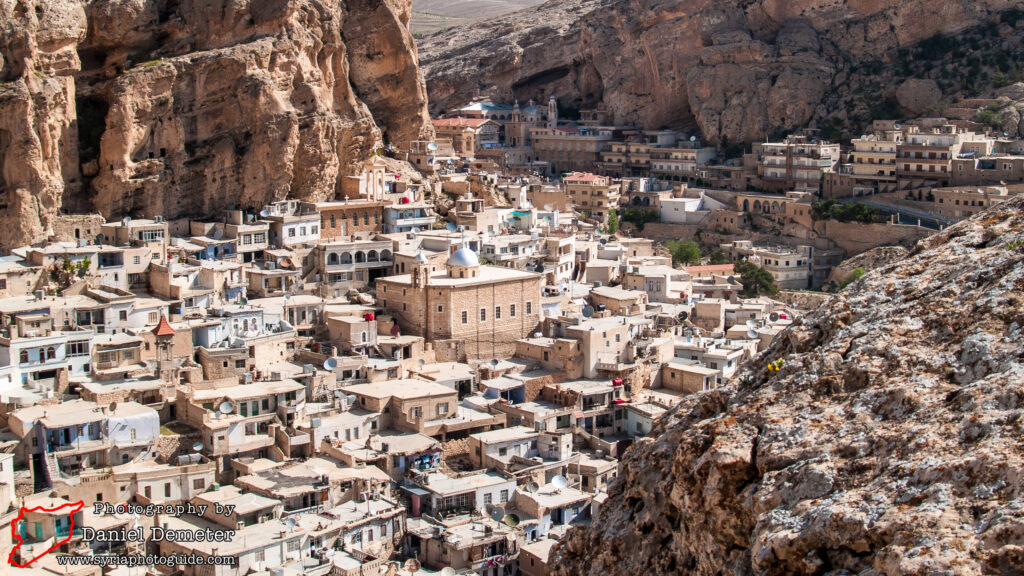
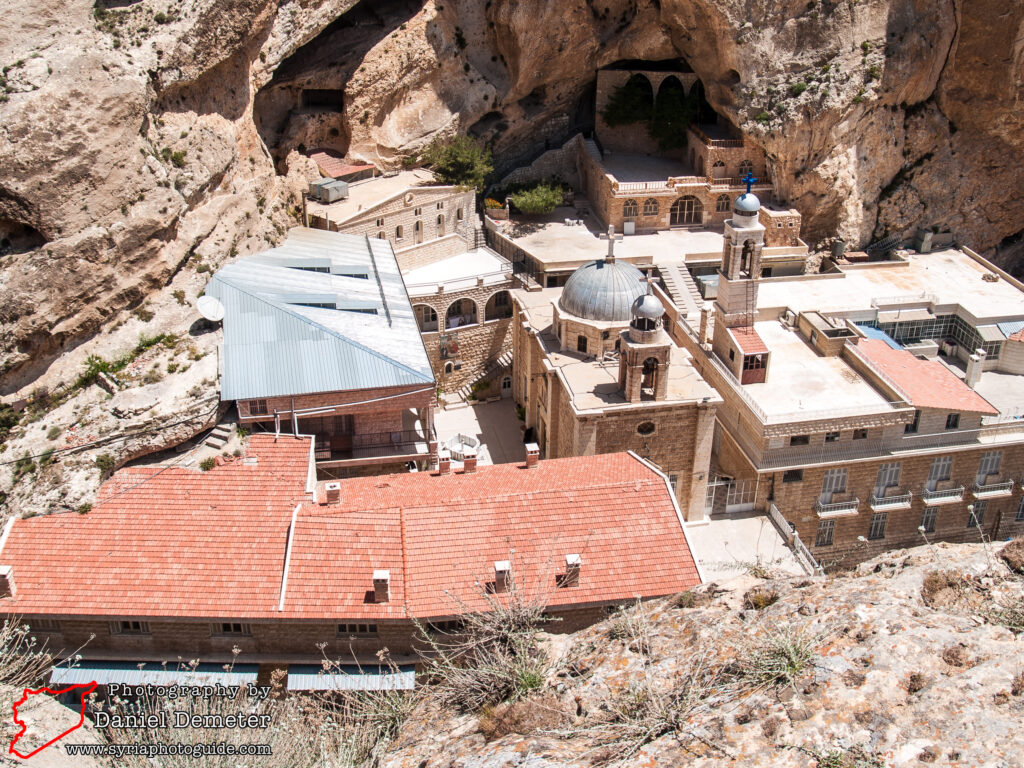
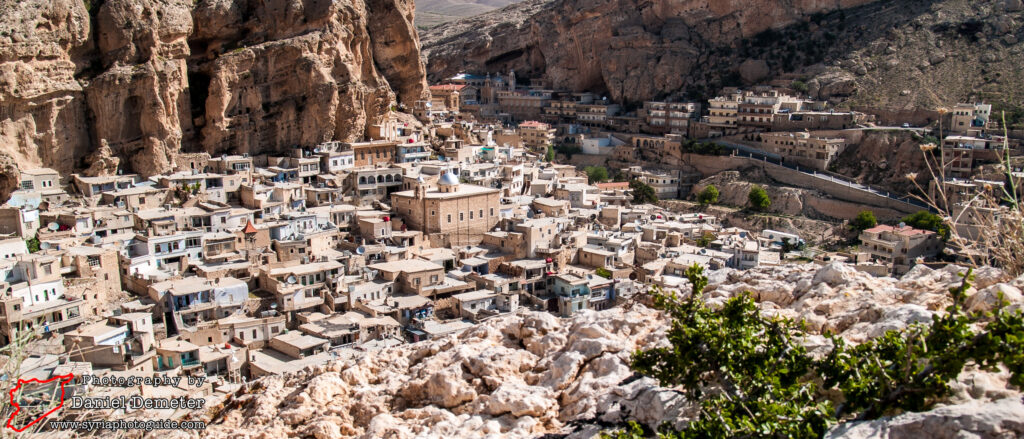
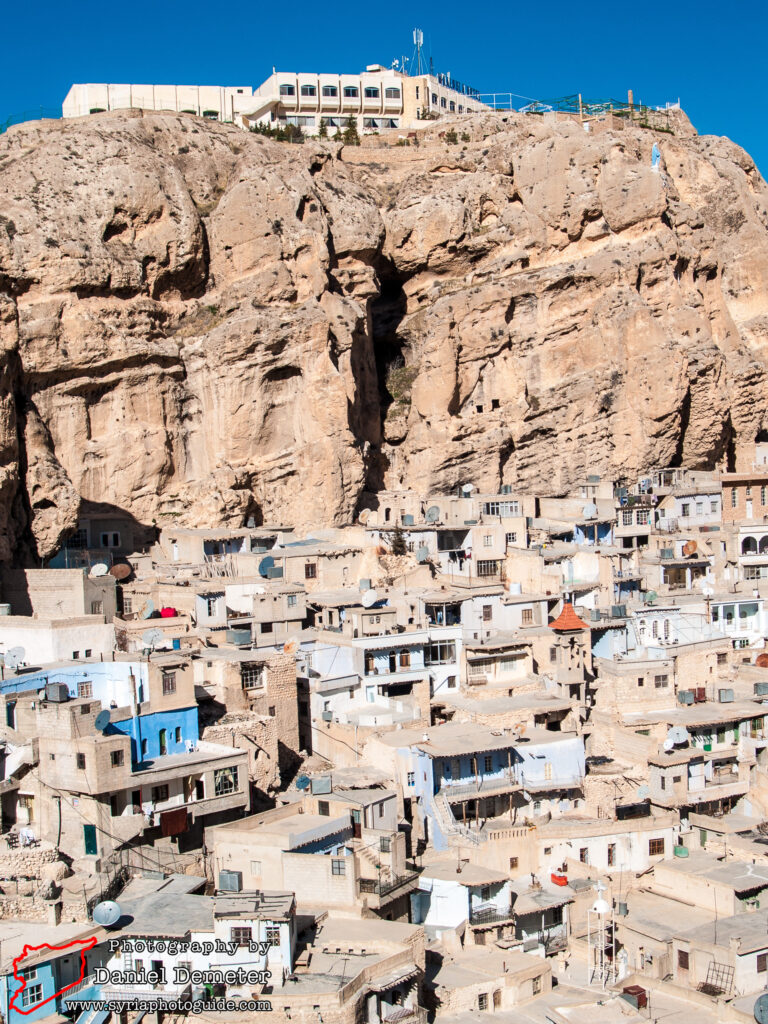
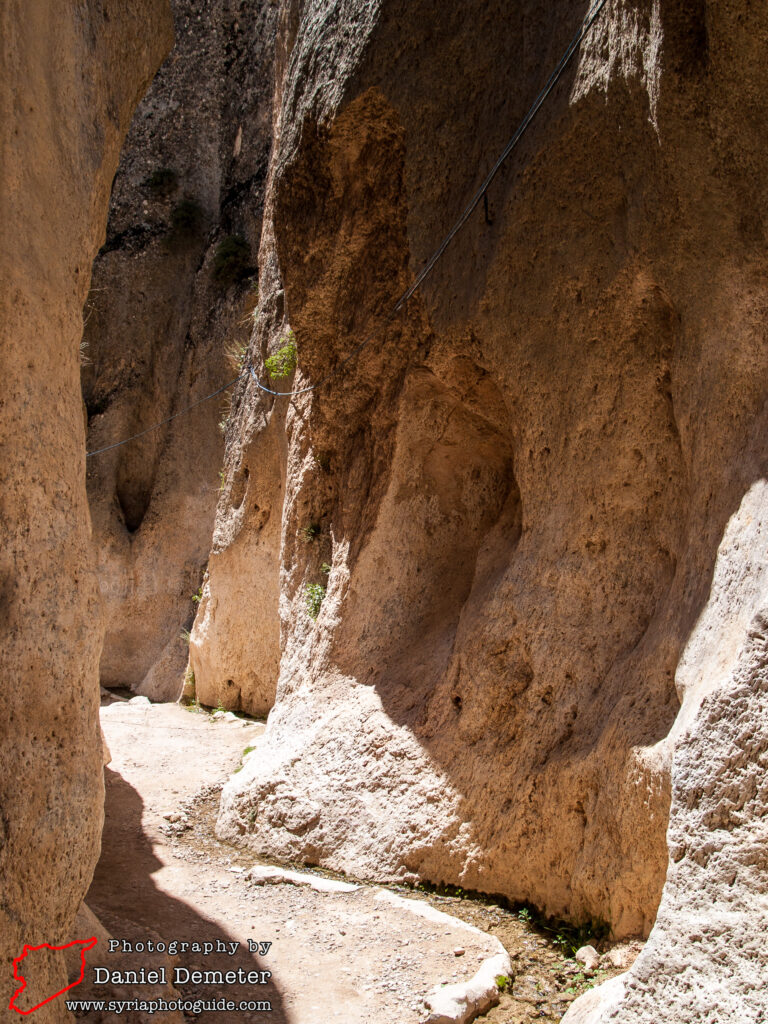
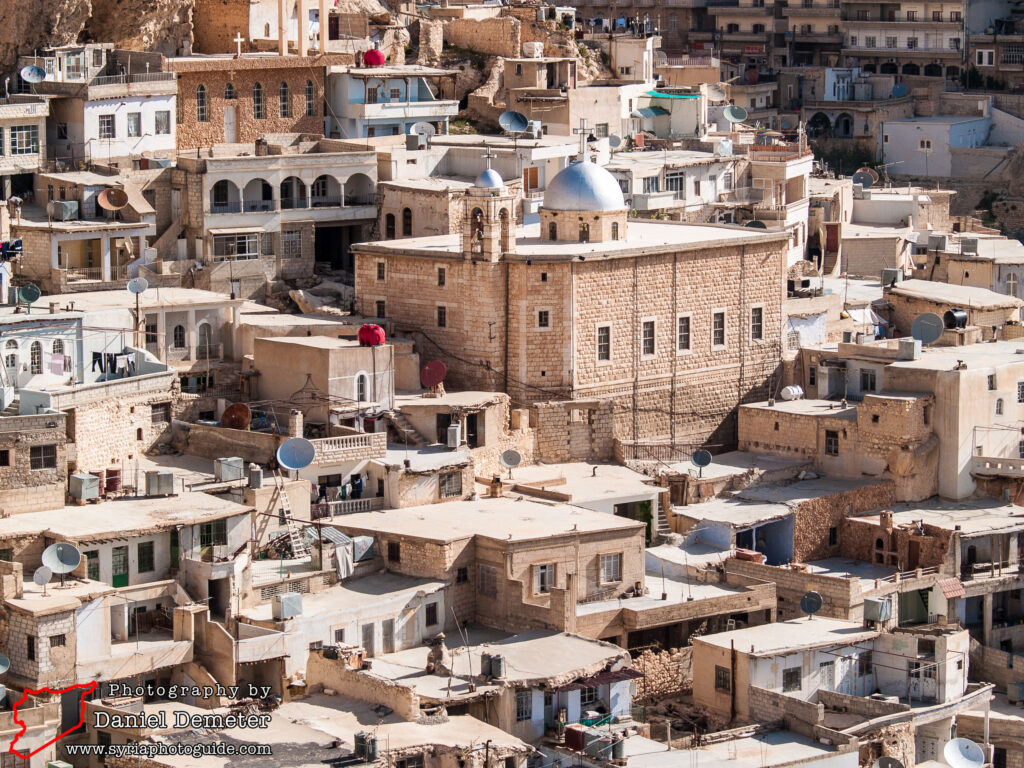
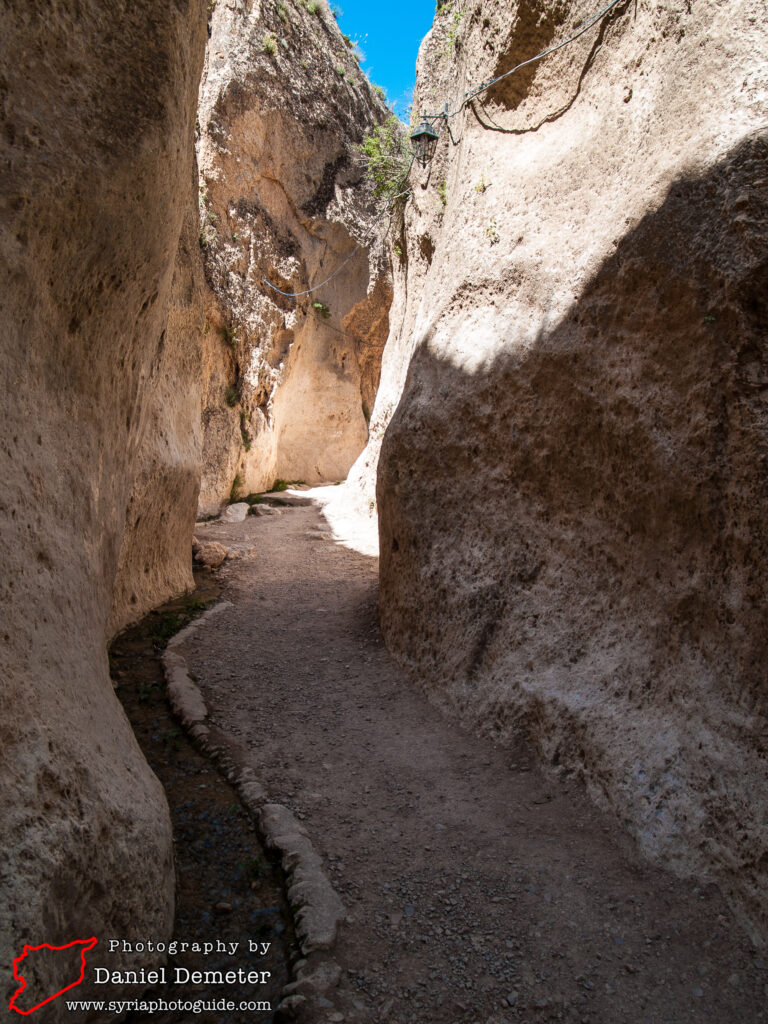
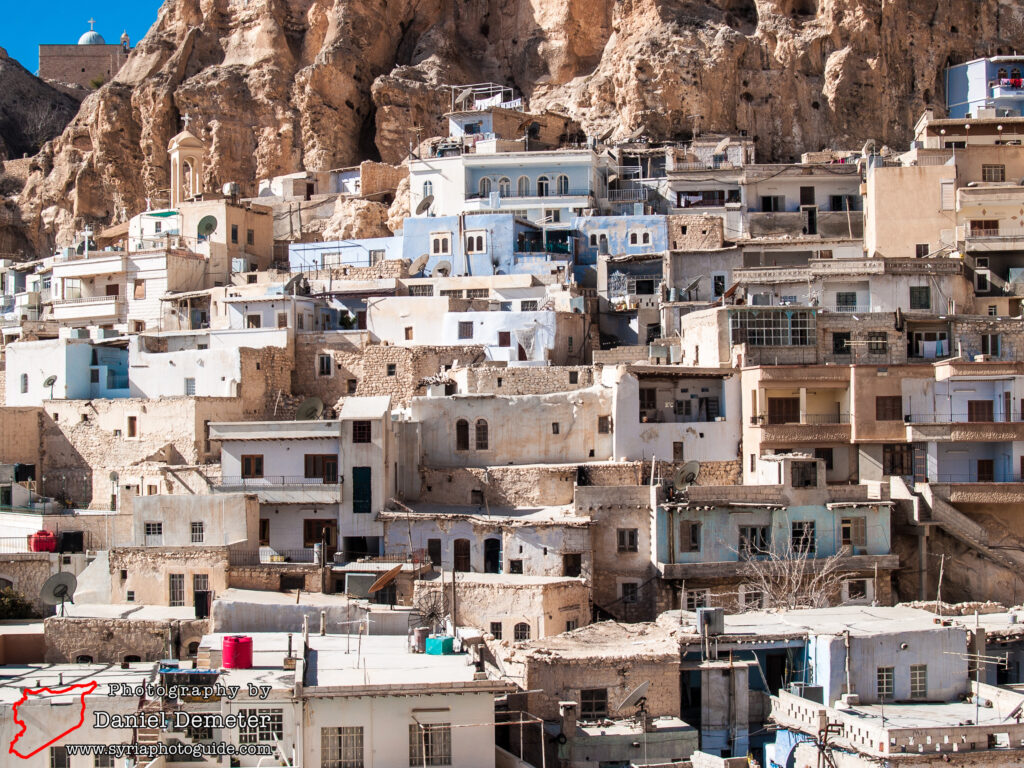
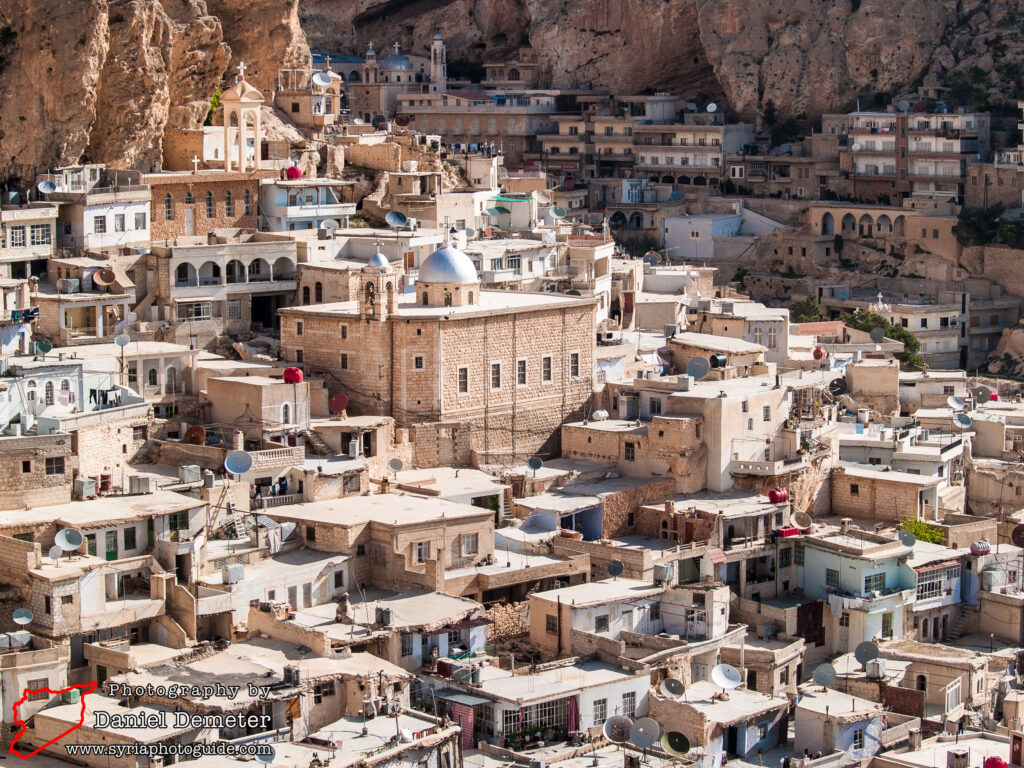
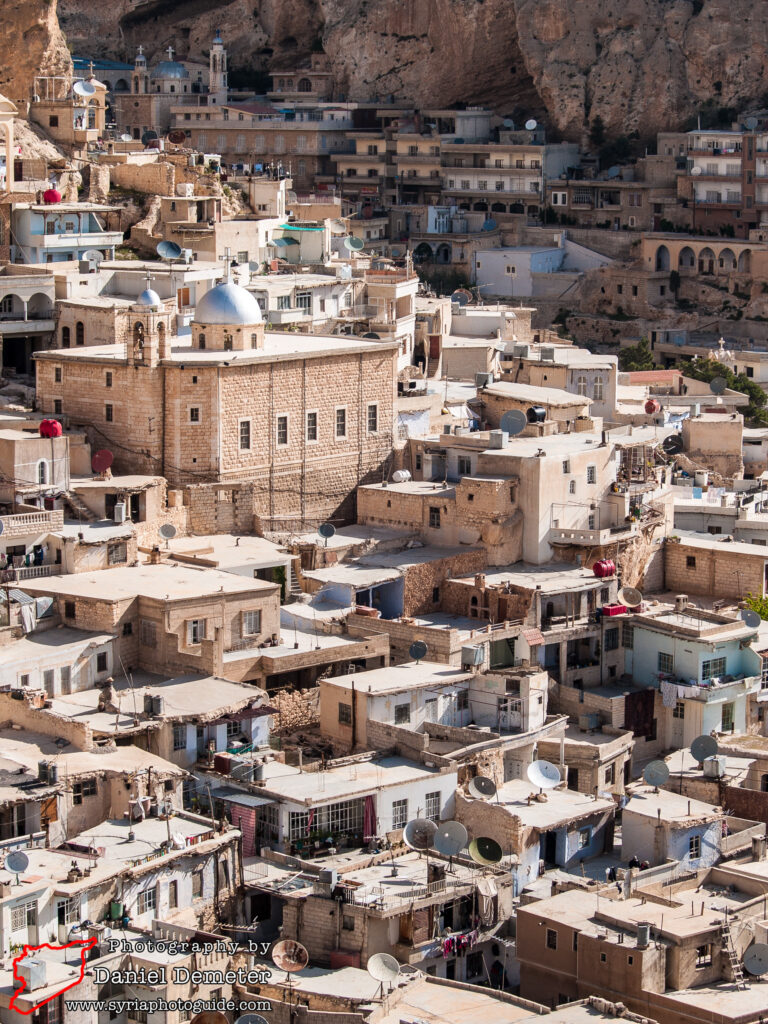
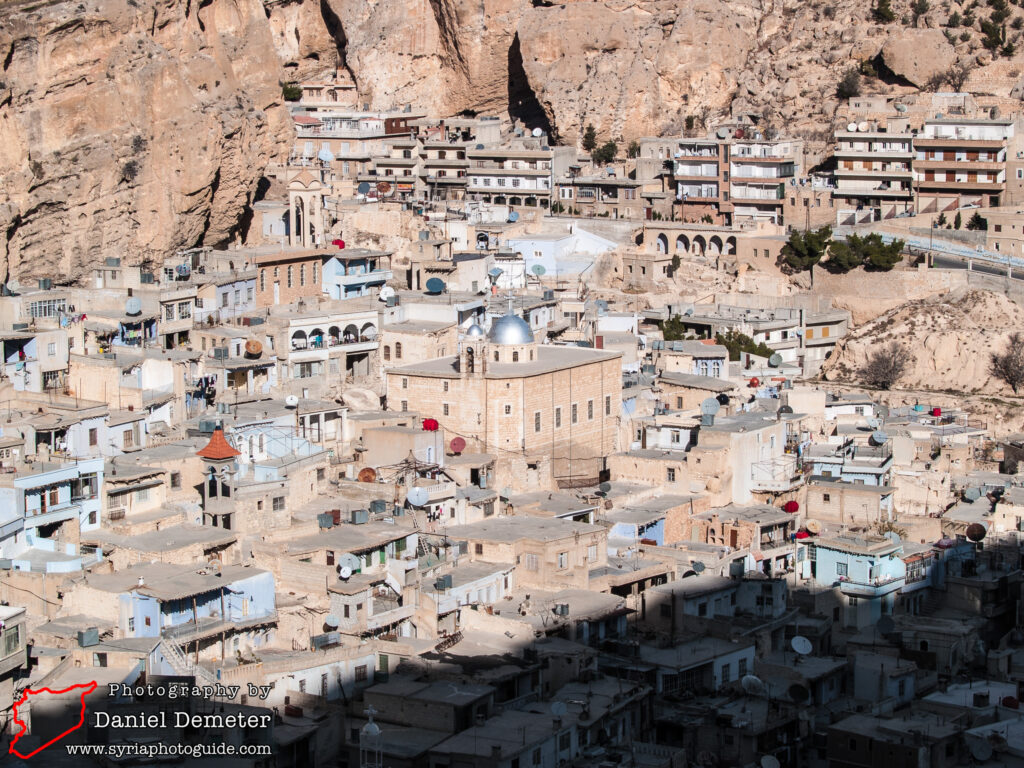
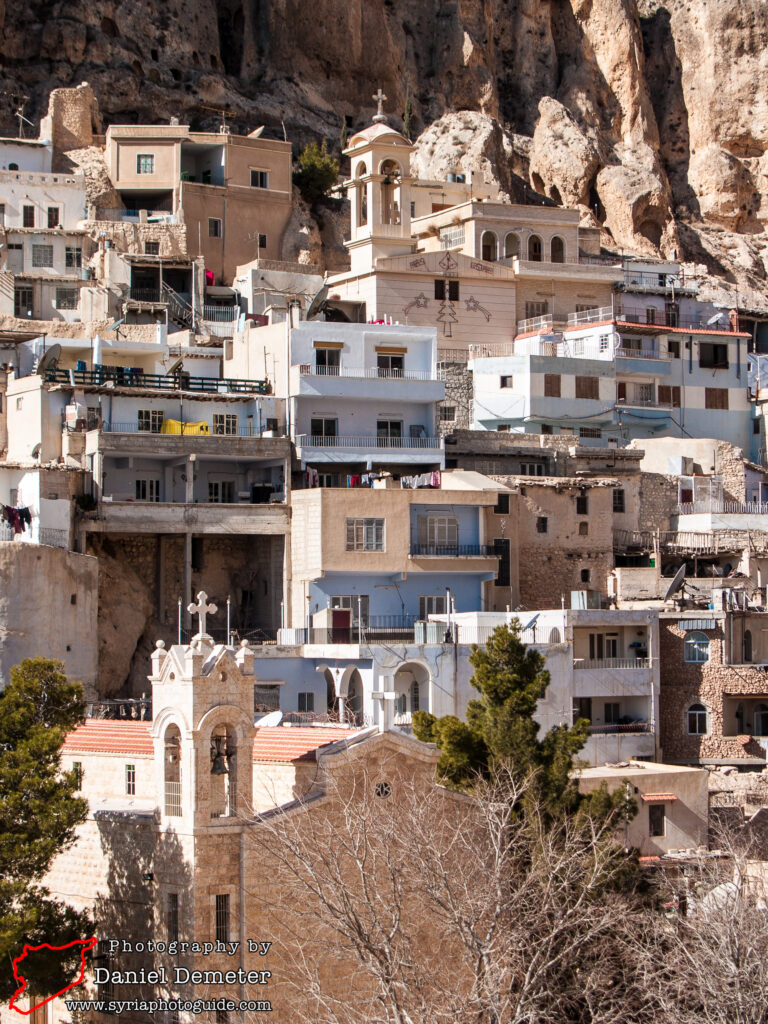
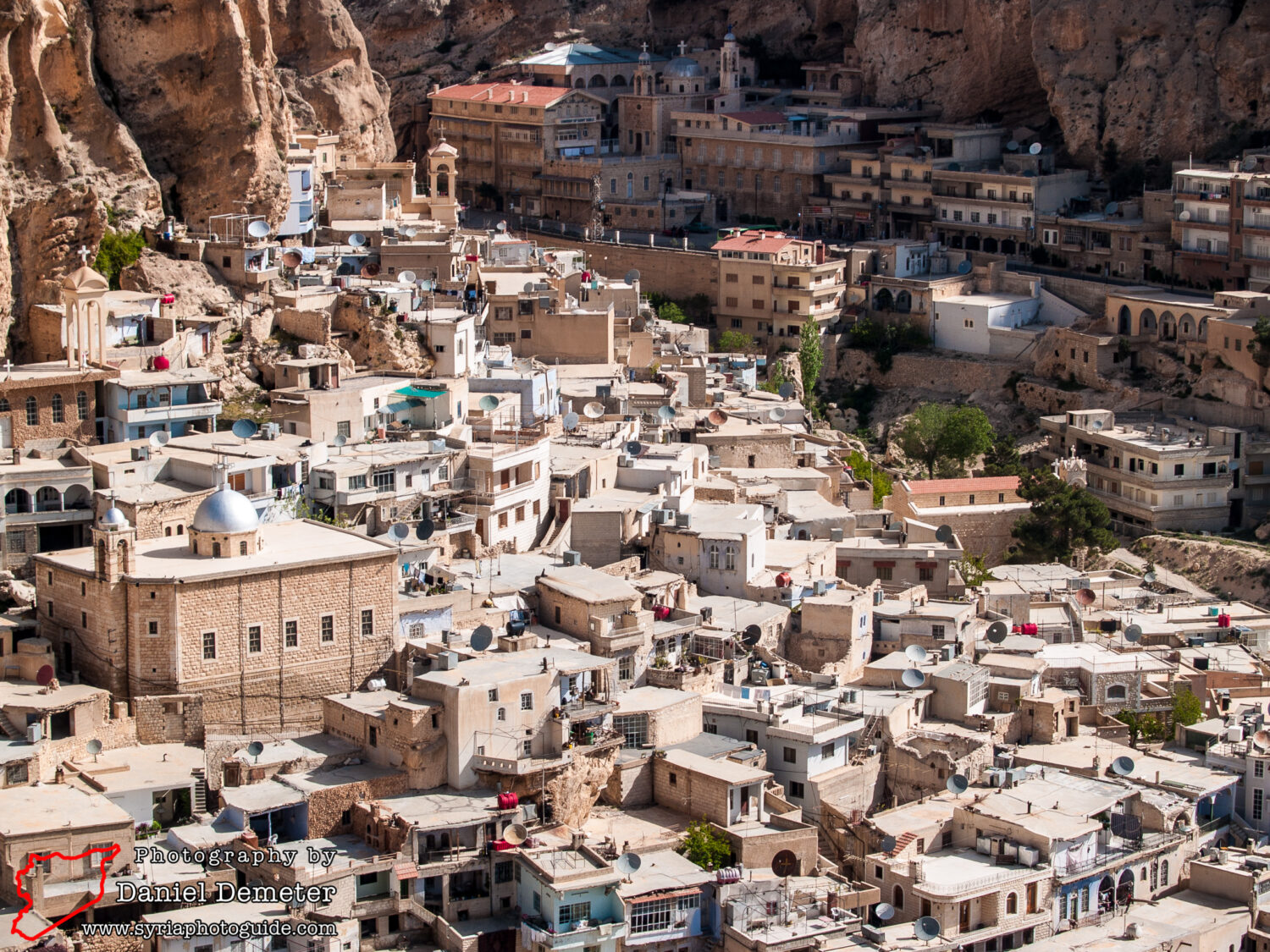
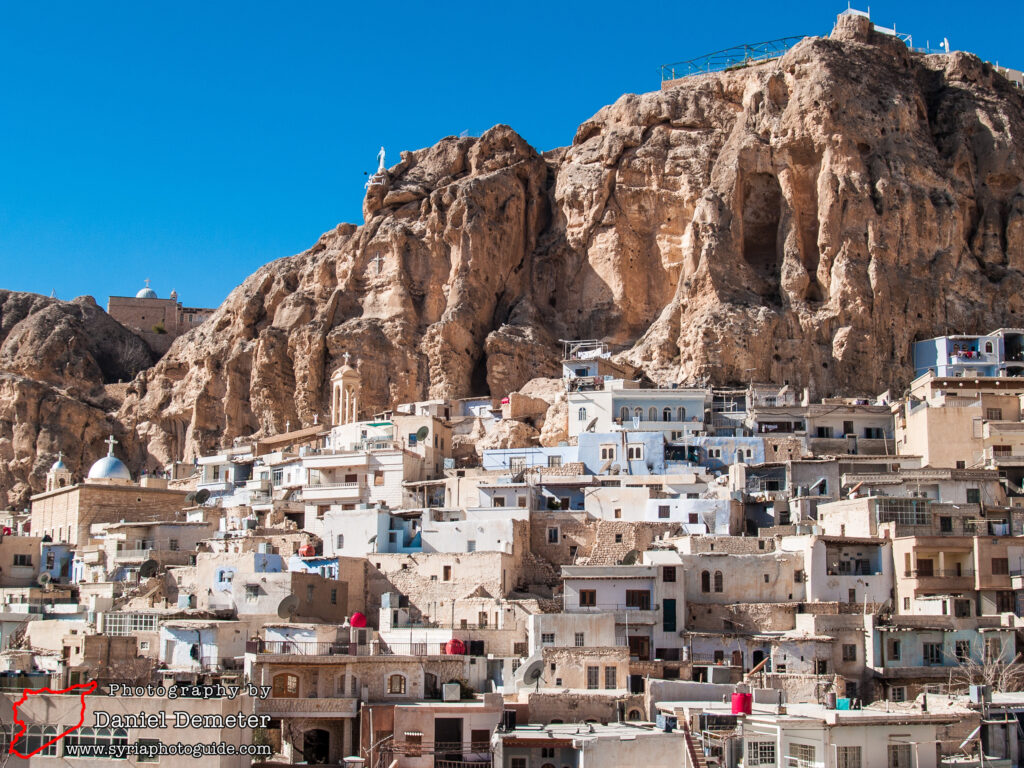
Preservation Status: Maalula (معلولا) was the site of major clashes between al-Nusra Front (جبهة النصرة) and Syrian government forces from September of 2013 through April of 2014. The town suffered significant damage as a result, including fire, theft and vandalism of its historic churches. The town has remained under government authority since April 2014, and some restoration efforts have taken place. Arguably of greater concern than archaeological heritage, however, is the mass displacement of the town’s Aramaic-speaking community. The conflict may have devastating consequences on the survival of Aramaic as a spoken language in this region of Syria.
Getting There: Fairly frequent microbuses from Damascus (دمشق) to Maalula (معلولا) depart from the microbus station near Balal Square (ساحة بلال) between the neighborhoods of Qasaa (قصاع) and Zablatani (زبلطاني), slightly northeast of Bab Touma Square (ساحة باب توما). The trip takes about forty-five minutes. There are occasional large buses traveling from the same station that are less expensive, but often significantly slower.
Coordinates: 33°50’41.45″N / 36°32’45.74″E
Transliteration Variants: Maaloula, Maloula, Malula
Rating: 8 / 10
